This week I was a guest at my Lama’s family puja. It is a huge gathering of his enormous family for annual prayers, blessings, delicious meals, lots of guests, and Buddhist ceremonies by monks and lamas. The family puja happens every January.
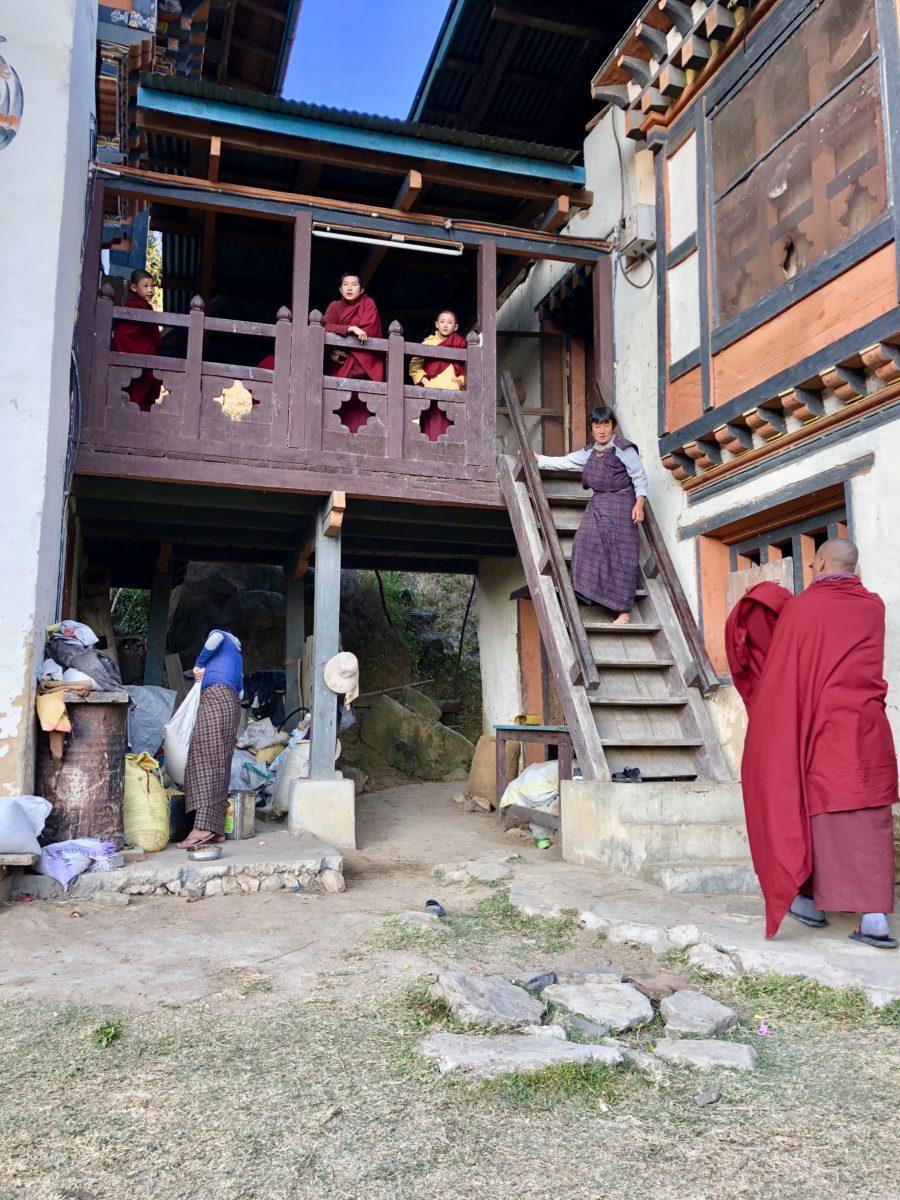
The family farm is located in Punakha, 2 hours west of Thimphu, the capital city. It’s a huge farm house and today it is full of family, guests, and monks for the ceremony. Yes, the front stairs are rather steep.
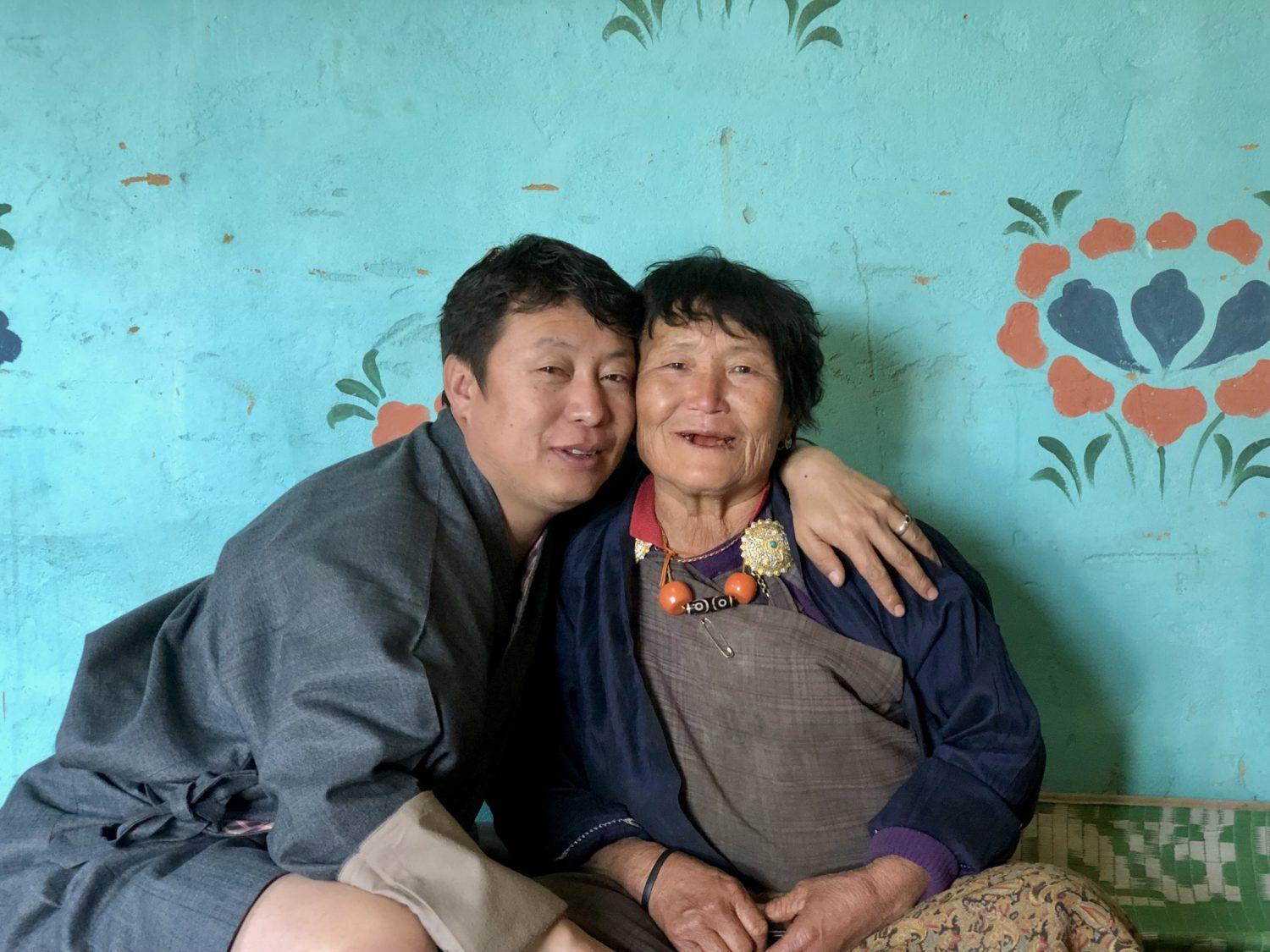
Lama with his mother Zekhom. Two very amazing and big hearted people. Zekhom works on the farm in Punakha. She manages a herd of cows, making fresh milk, cheese and butter every day.

The Lama demonstrates how to churn butter from his mother’s cows.
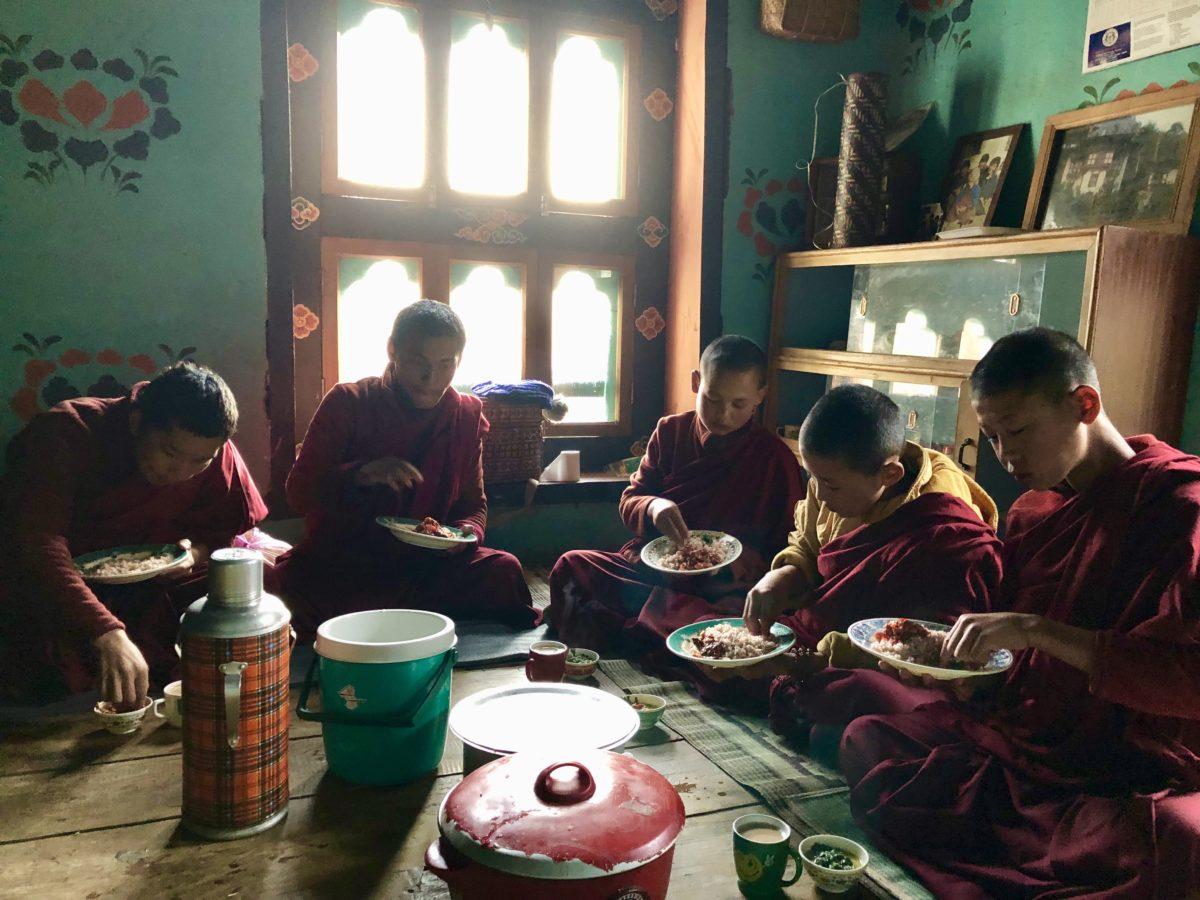
These monks are chanting all day for two days. For lunch break they’re eating red rice, curry, and emma datsi.
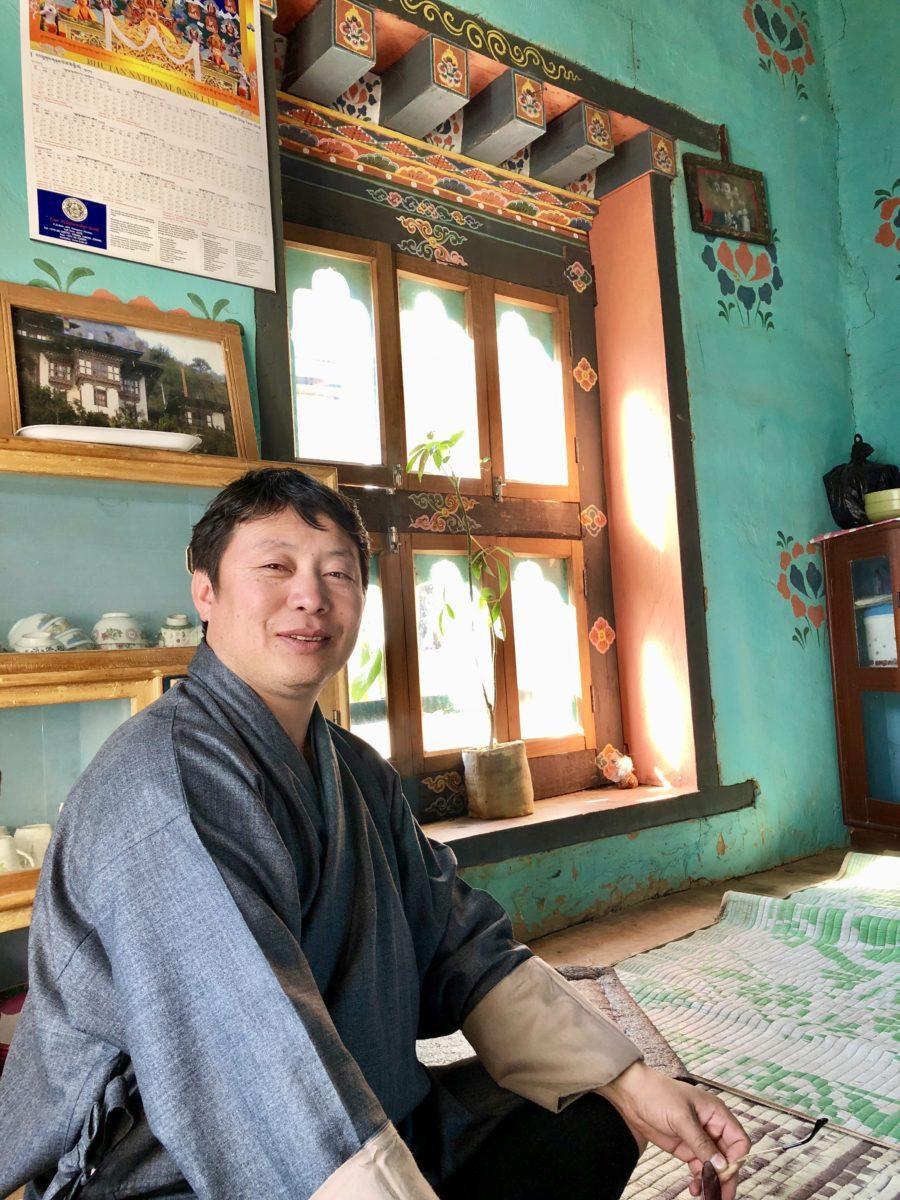
The Lama in his family home. He is the eldest son and the only Lama, which carries special responsibilities.
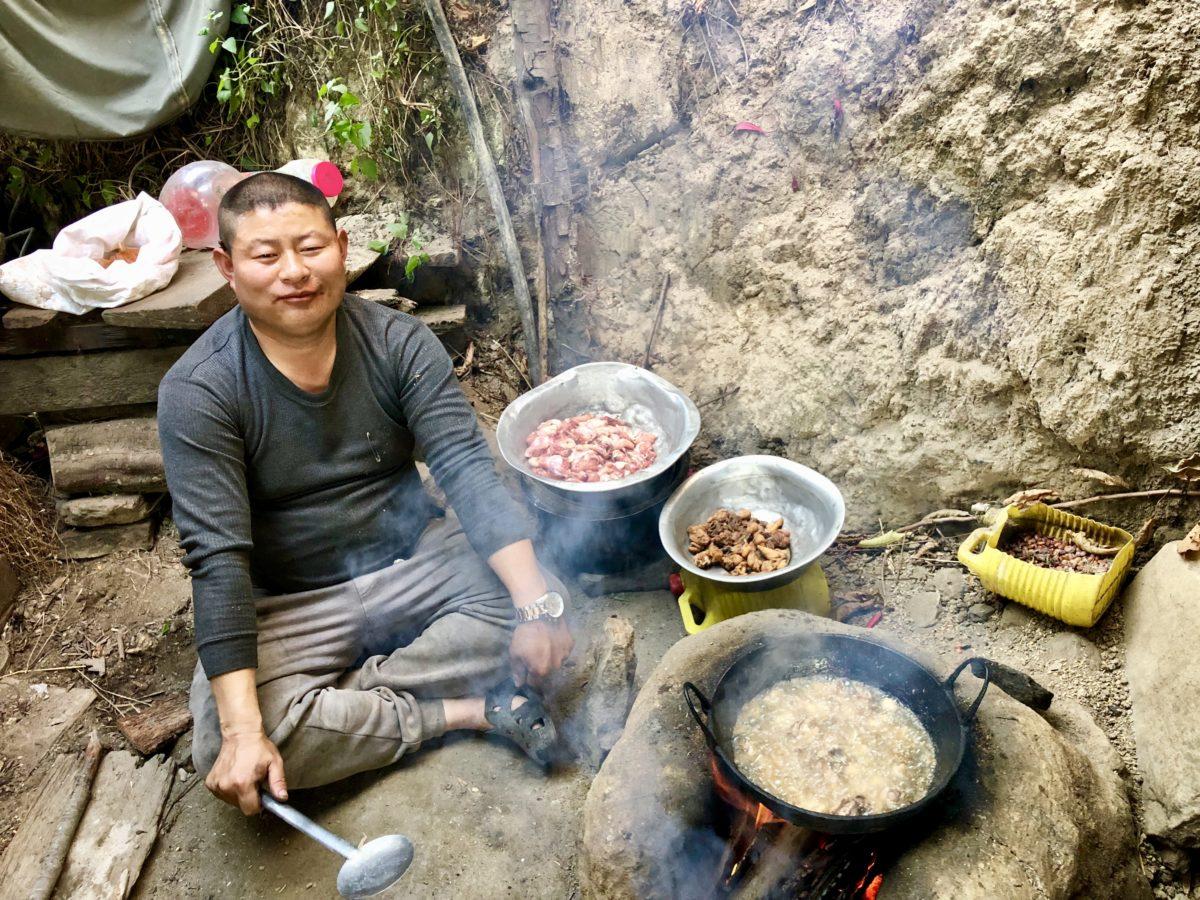
Lama’s brother Beyla is in charge of the big kitchen. Here he is cooking chicken for the ceremony.
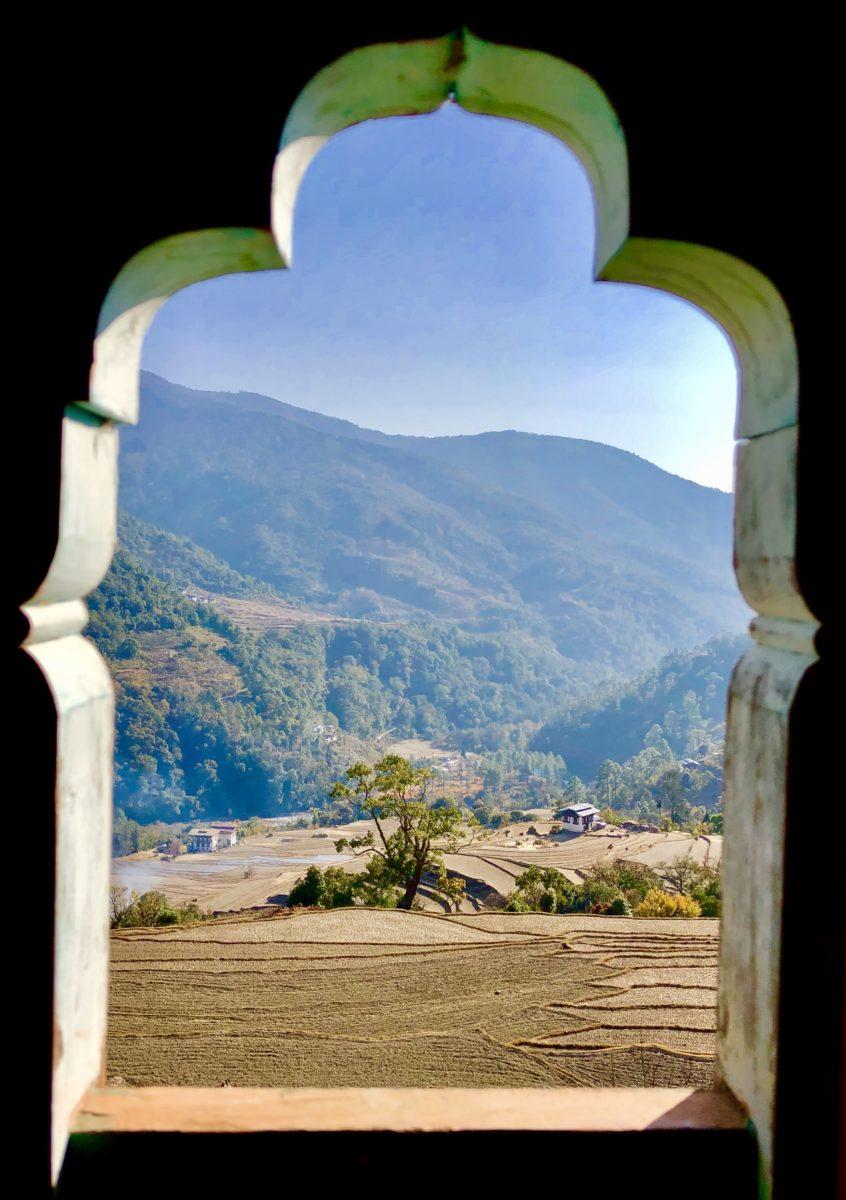
This is the view from our bedroom window of the farmhouse. Heavenly! See the terraced rice fields?
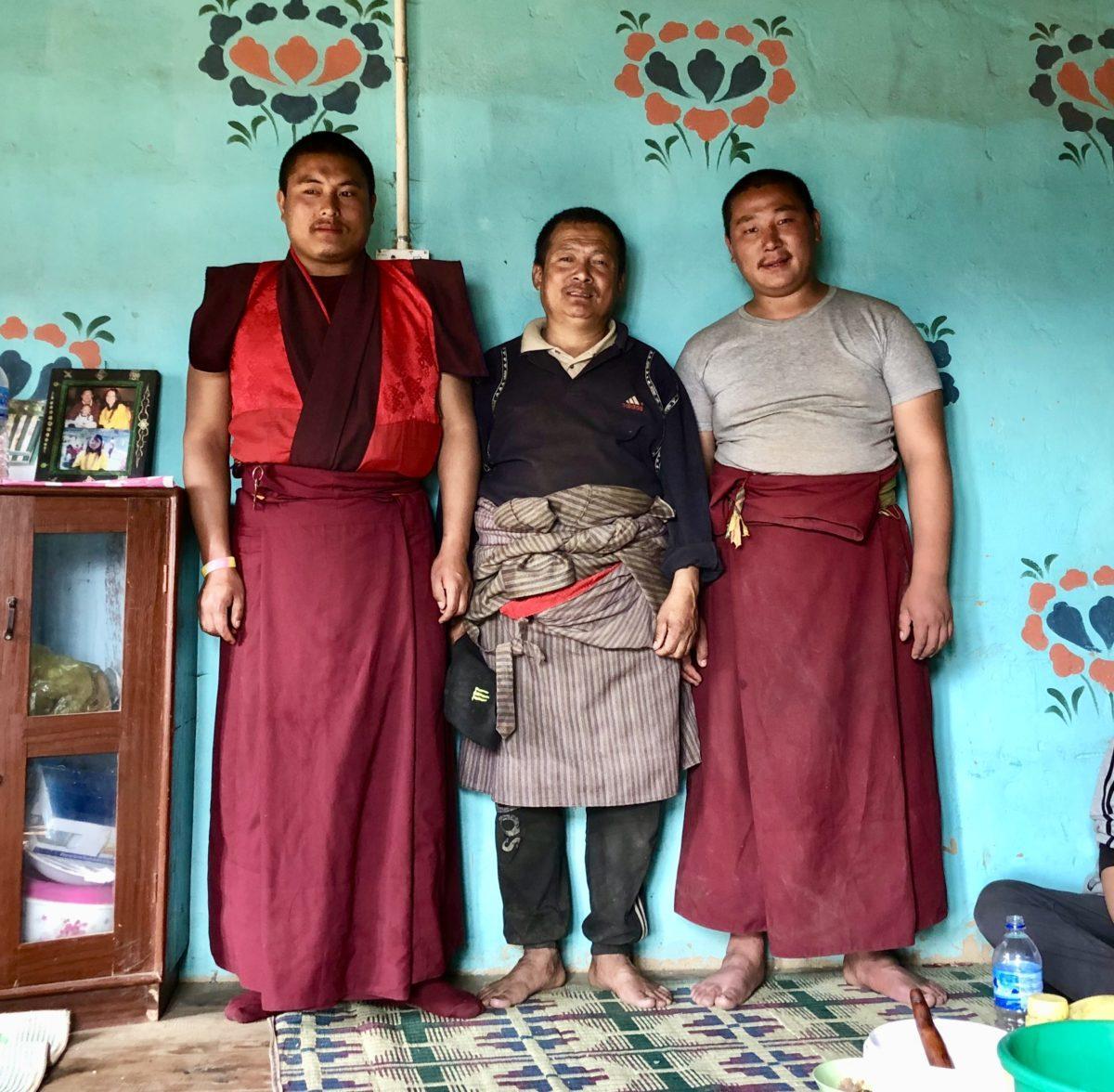
These strapping monks came for lunch from the local monastery. They collect taxes from the farmers. Every year, my Lama’s family farm gives them about 180 kilos of rice, according to the size of their land. Yep, when these guys come knocking, I’d pay them.
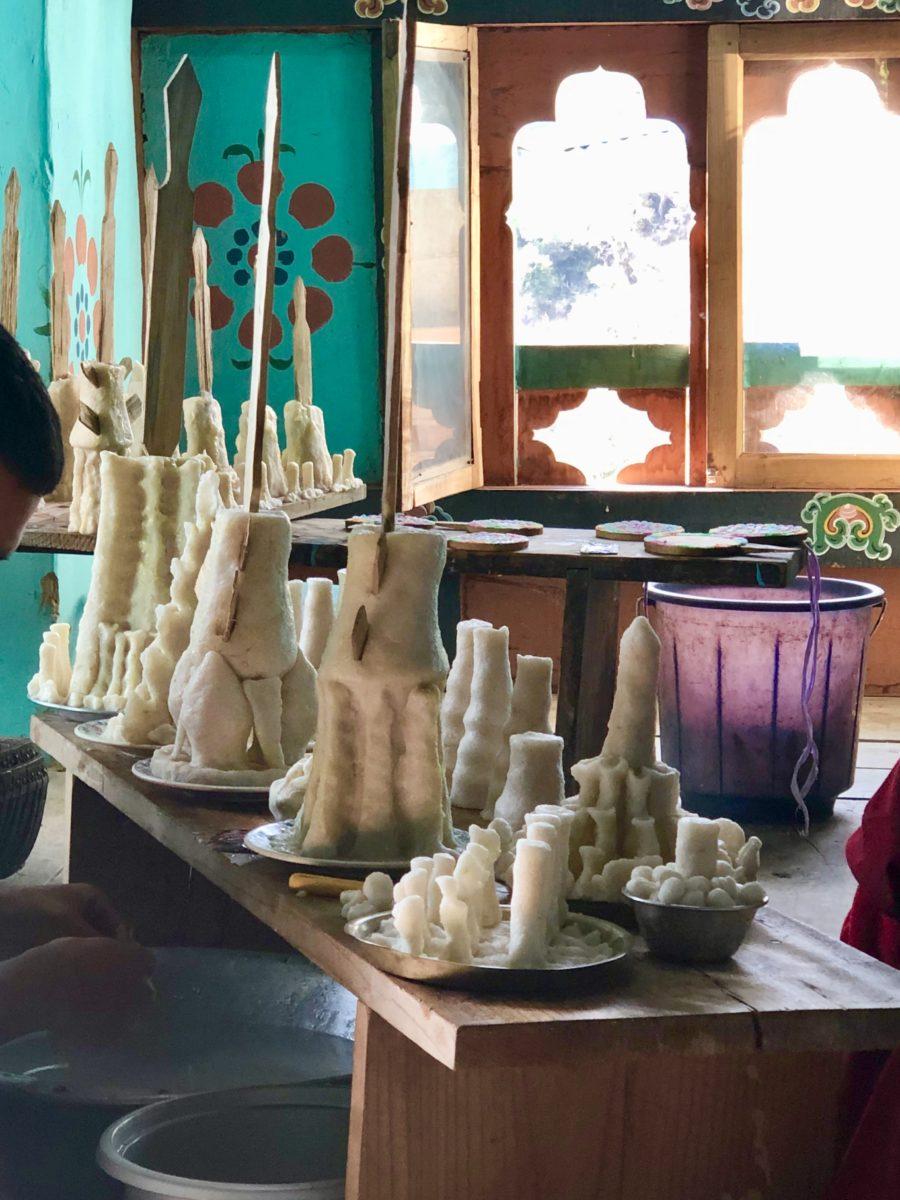
“Torma” are the ritual shapes that will soon decorate the family altar. They’re made with finely hand-ground rice dough. The rice is grown on the family farm.

Monks skilled in making ceremonial “torma” decorate them with colored rice dough. Soon it will adorn the family altar.

This is the hand grinder for rice flour. Put rice in the hole. Then two people alternate making heavy blows with poles to reduce the rice to a fine powder. Then it is sifted and made into dough for treats and altar ornaments.
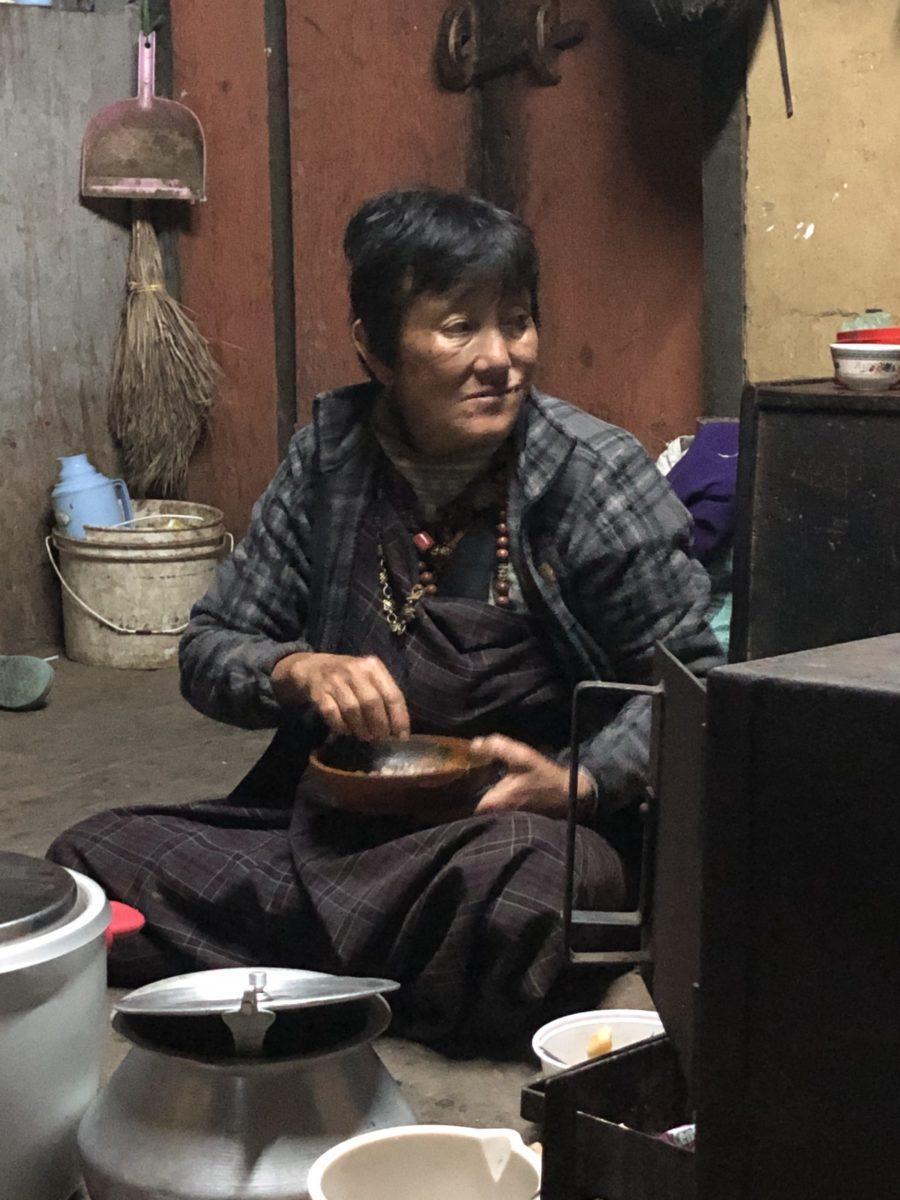
Lama’s aunt Sangay Pida’ serves dinner in the kitchen. Everybody gathers around the wood stove. Tonight we’re having red rice with cabbage beef stew.
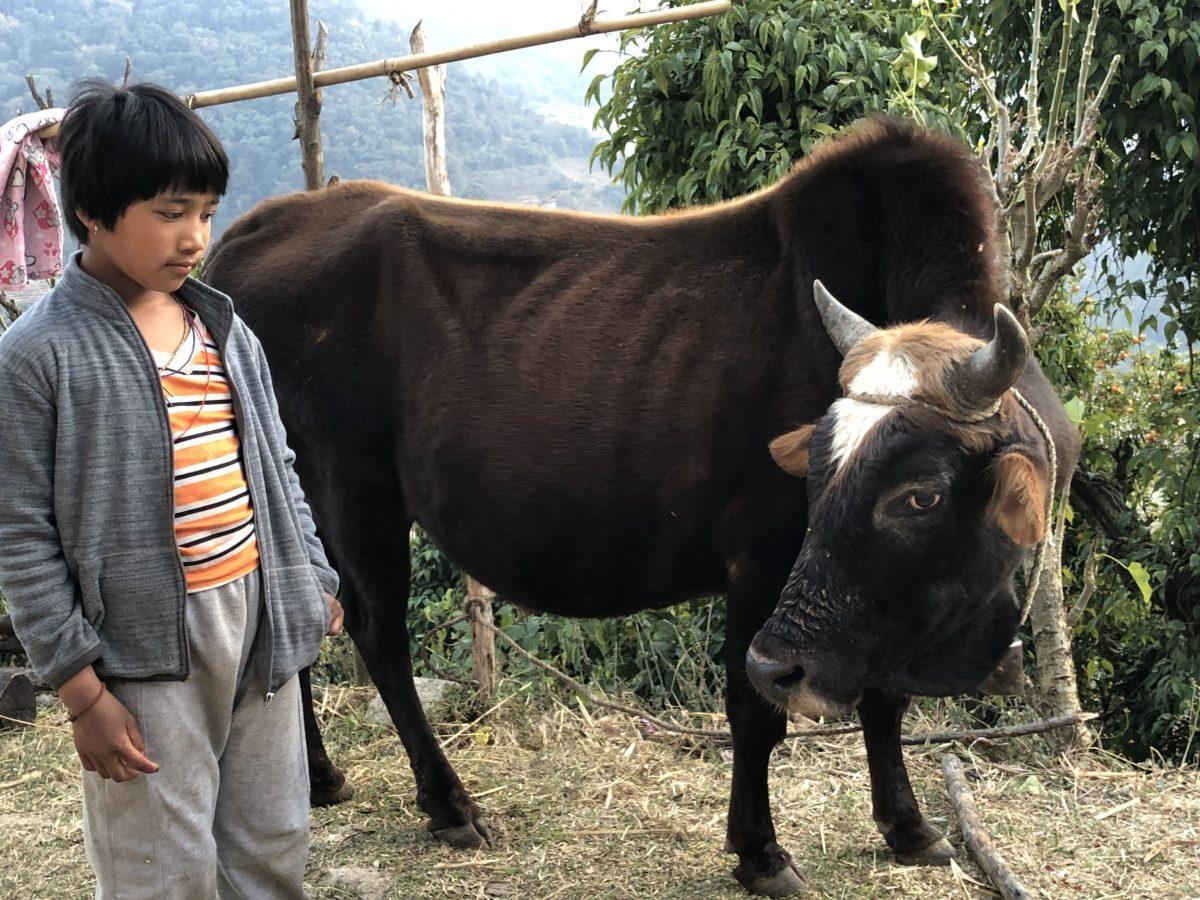
Hamu is wary of the family bull and keeps a safe distance.
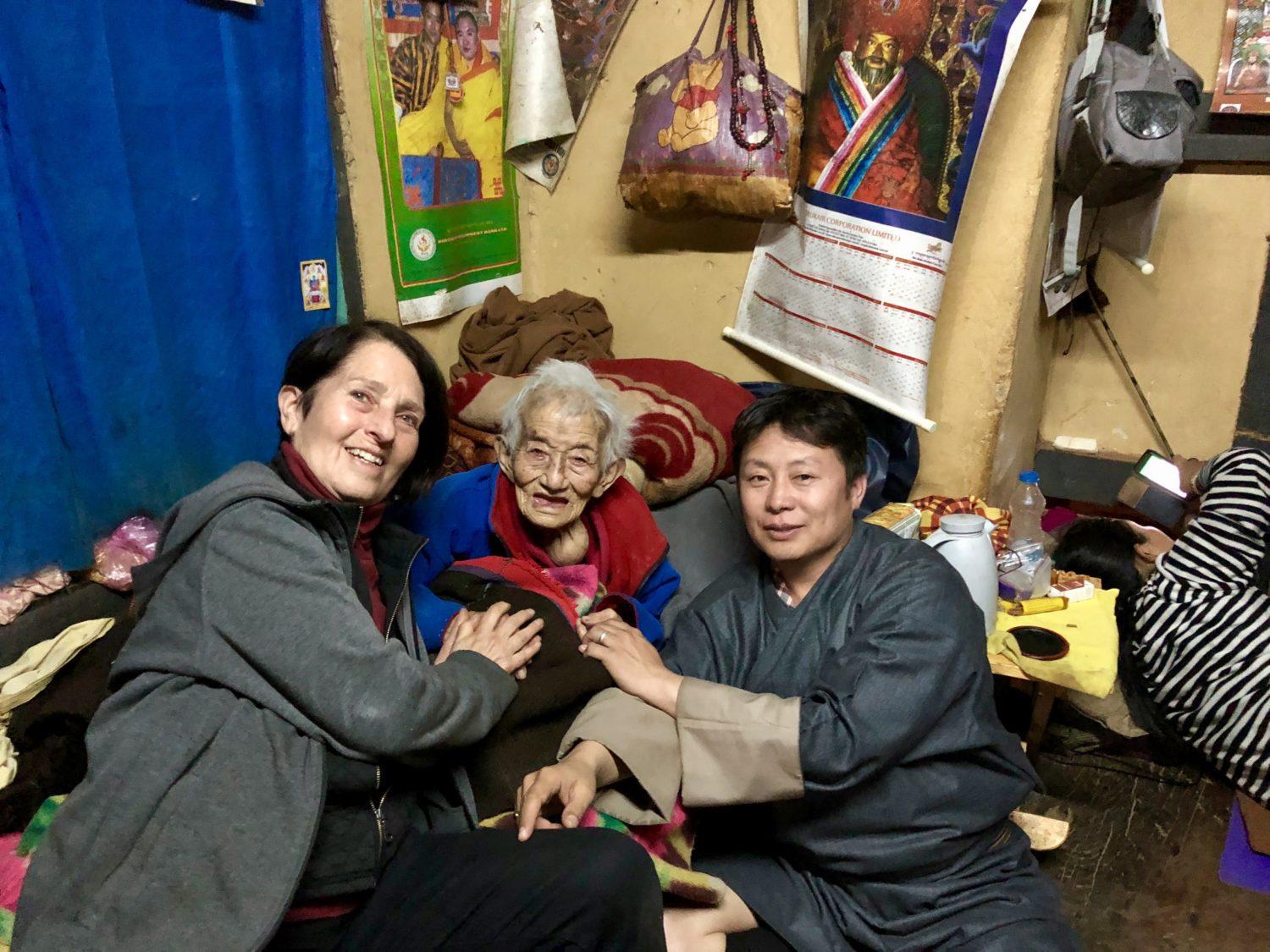
Lama’s beloved grandmother Rinchen Pida’ got to know me more on this visit. She’s 98, perfectly lucid, filled with joy and wisdom.

There was always food cooking in huge pots over the fire. For two days the men cooked in the outdoor kitchen preparing rice, veggies and meat. They even cooked an entire leg of pork for the final celebration breakfast.

A big pot of “Suja” or Bhutanese butter tea, is always ready to pour.

The first day of the puja, everyone got spiffed up. Lama’s two aunts, Sangay Pida’ and Namgye Zam did haircuts. Meanwhile the monks are chanting all day upstairs in the shrine room.
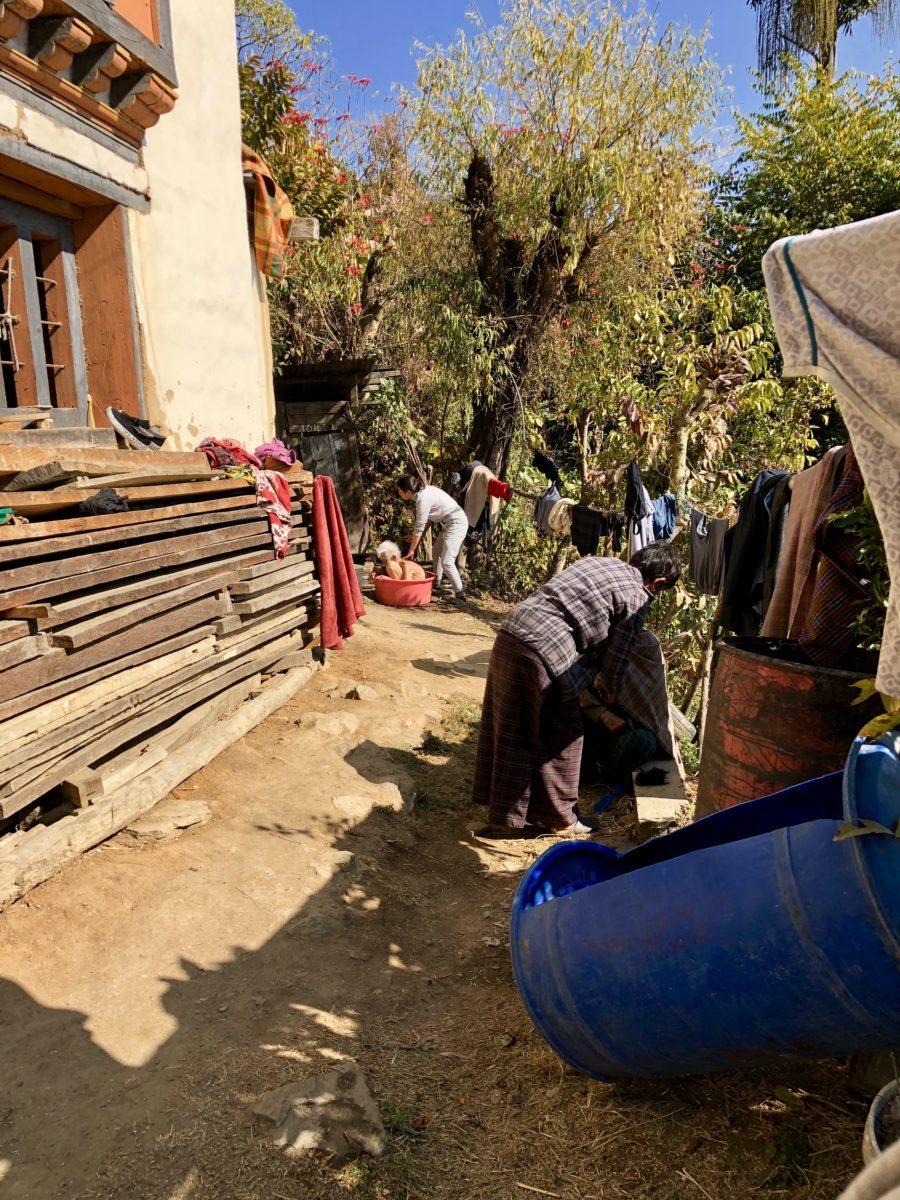
Grandmother Rinchen Pida’ is the dearly beloved head of the family. Today she is carried downstairs for a bath. It’s a family project and everybody helps out.
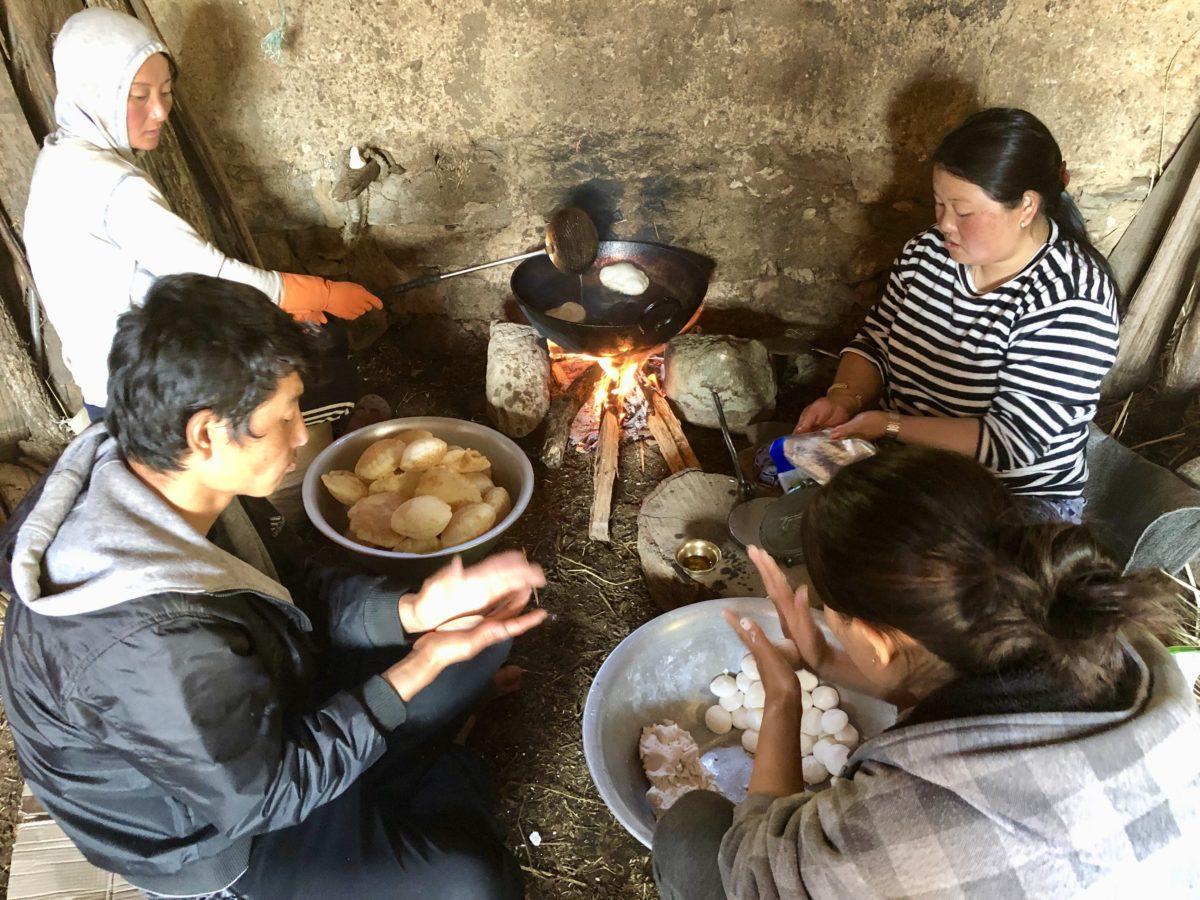
Many family members are busy preparing “Maku”, a rice flour delicacy.
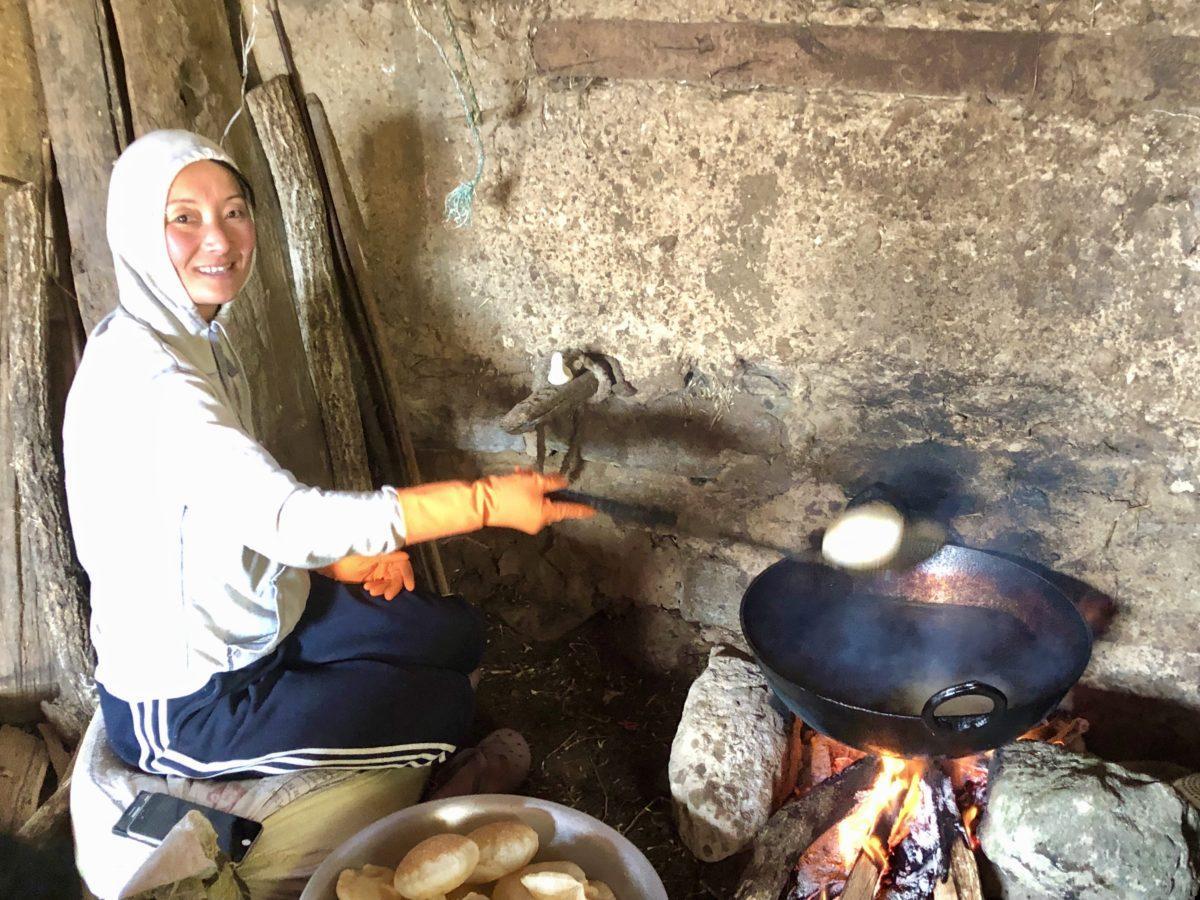
My sister Ghalem is an expert cook and superior organizer. She’s frying “Maku” here. The seamless organization of events is all due to her skillful planning.
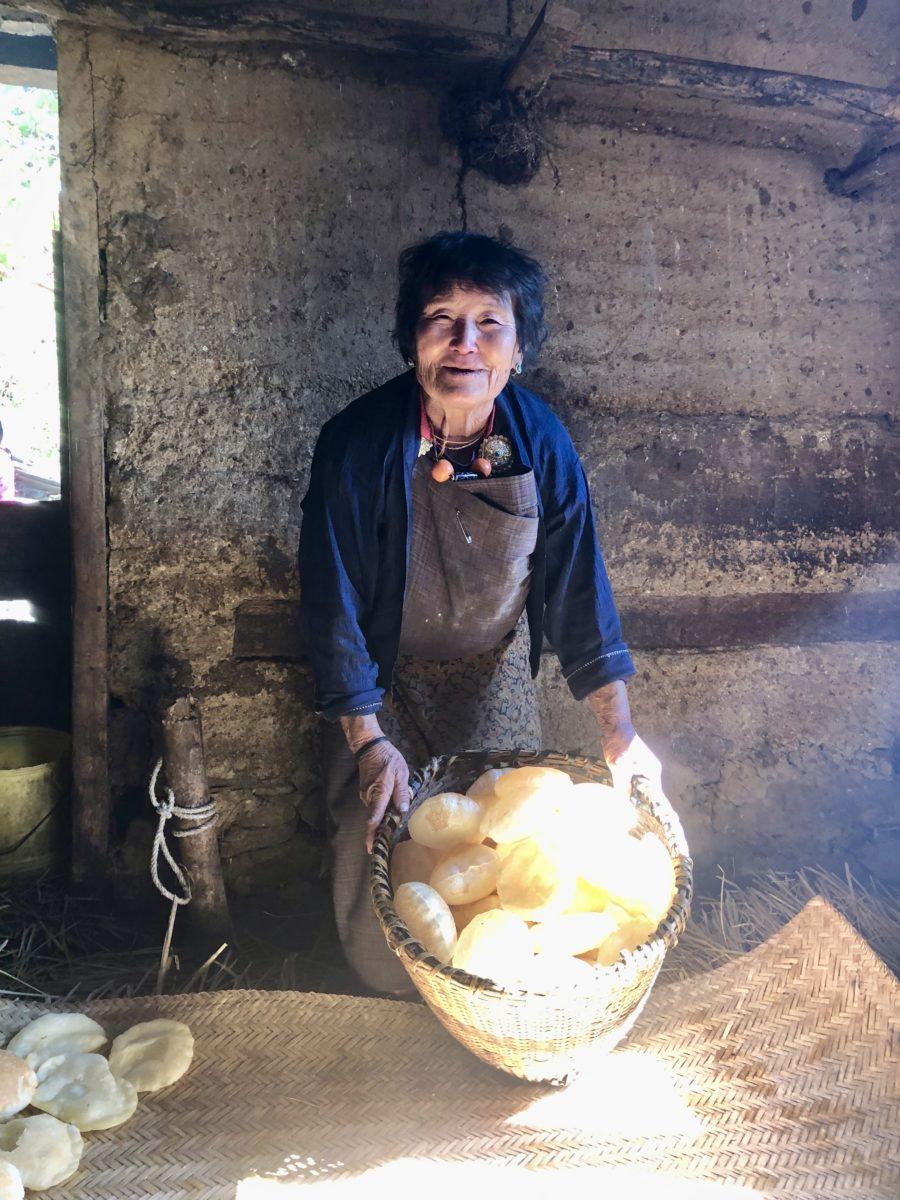
Lama’s mother assembles thousands of “Maku” treats for the ceremony and for guests. They’re made of home-made rice flour and water, flattened, and fried like Indian puri.
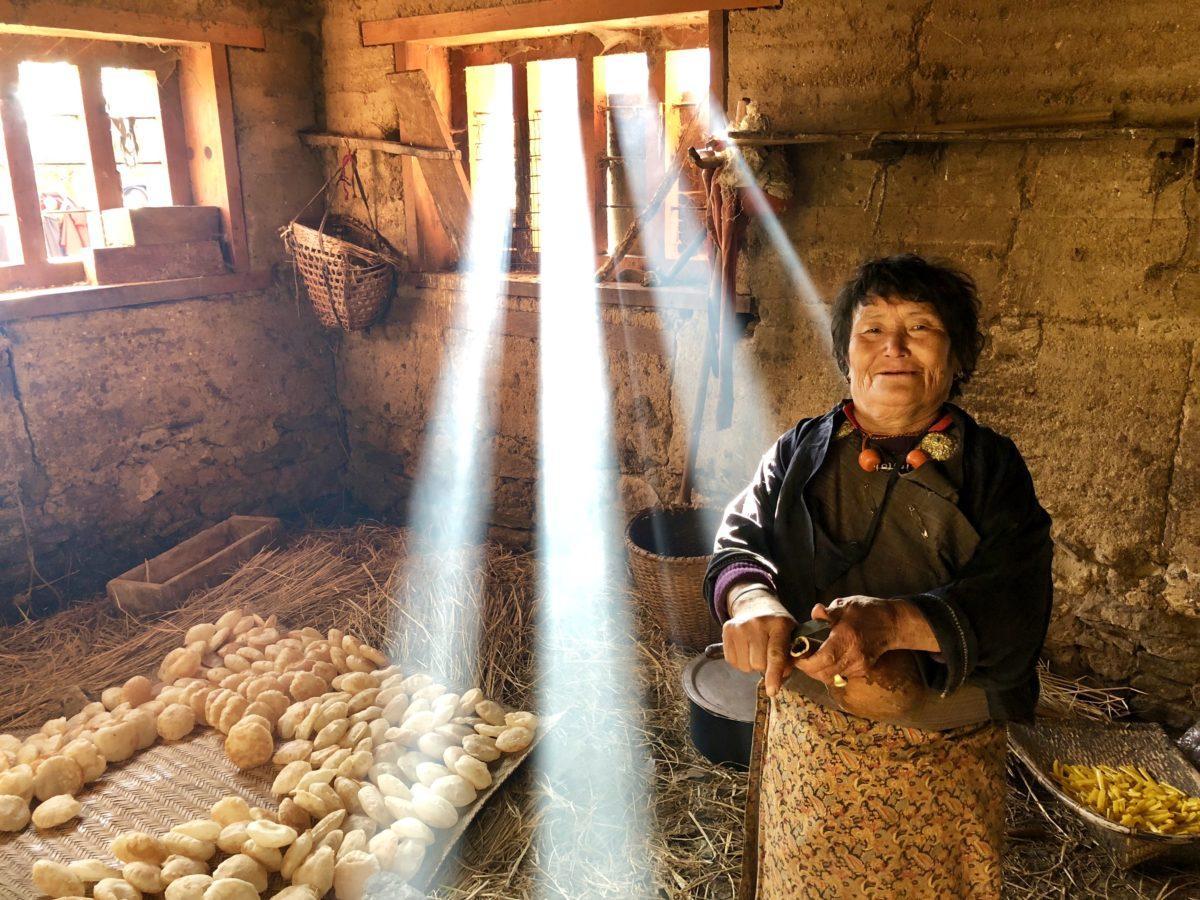
I was focusing my camera on these beautiful rays of sunlight when Lama’s mother Zekhom stepped into the photo, and I clicked! Everything happens like clockwork here. The family fed hundreds of guests with no tension, no bickering.
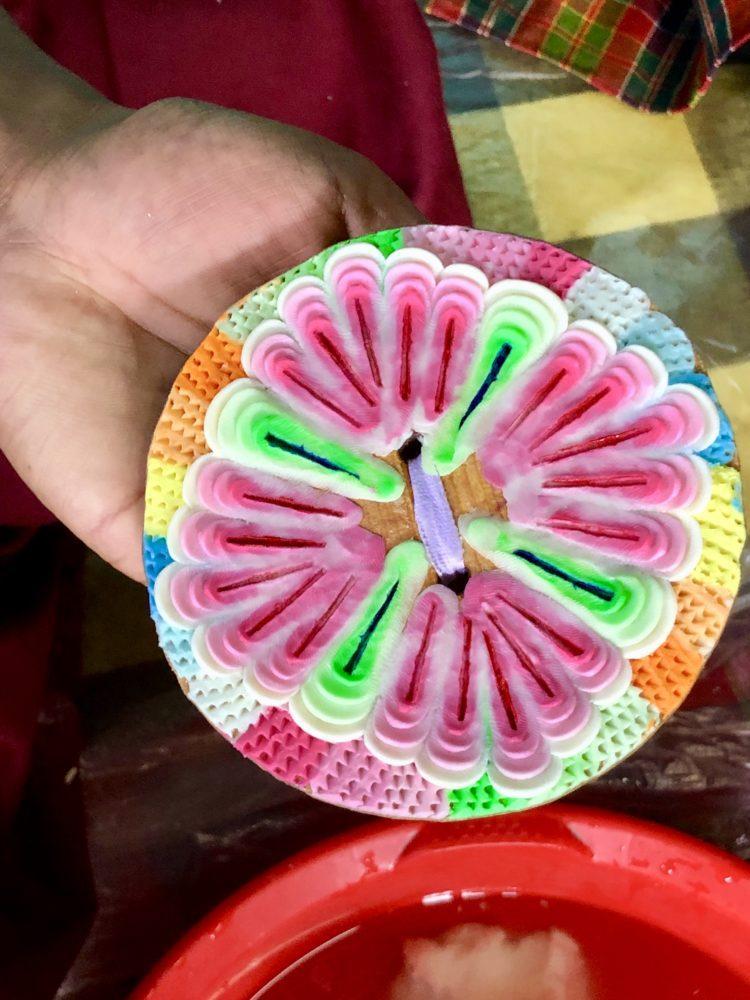
Monks worked for two days to color these disks for the torma that will adorn the family altar.
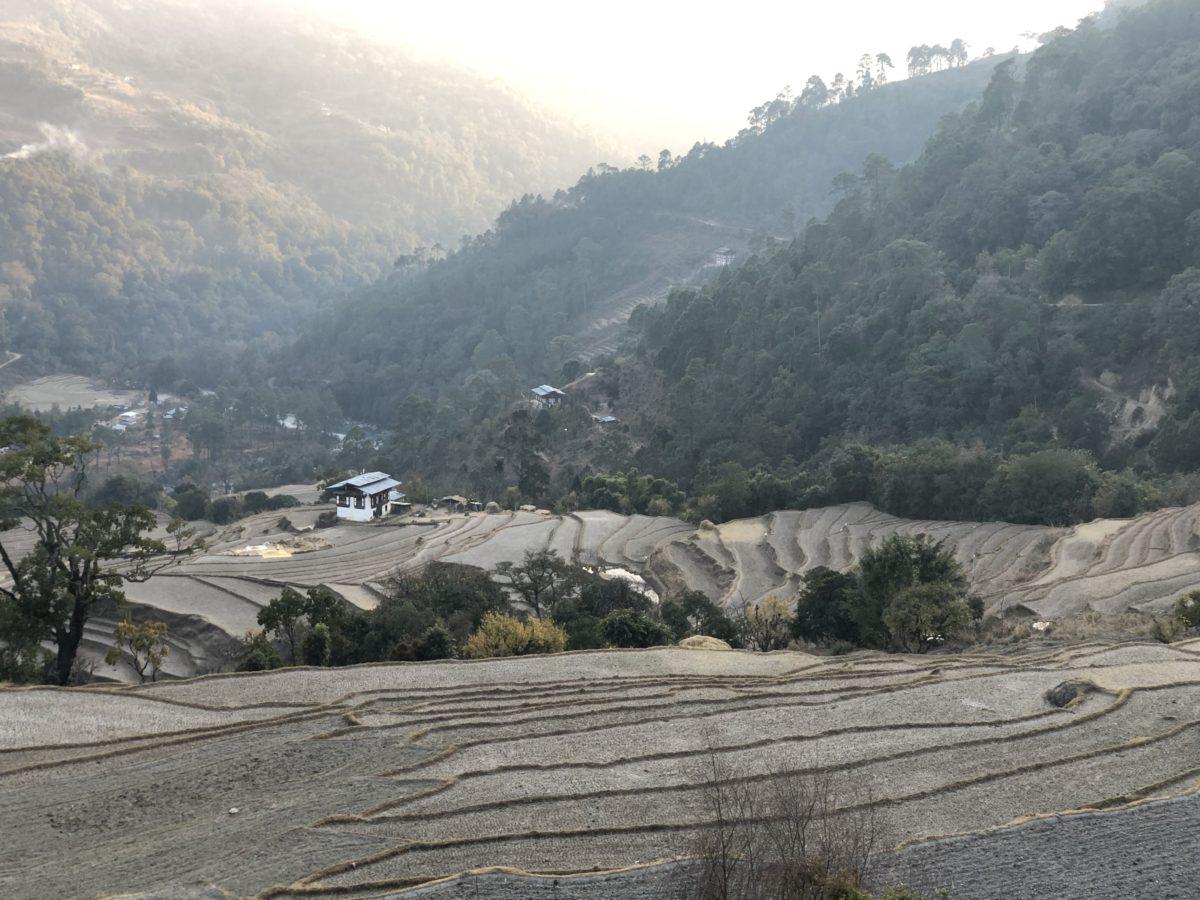
This is a view out my bedroom window down the valley. The family’s terraced rice fields are dormant now, but will continue to produce many kilos of vitamin-rich red rice in the Spring.
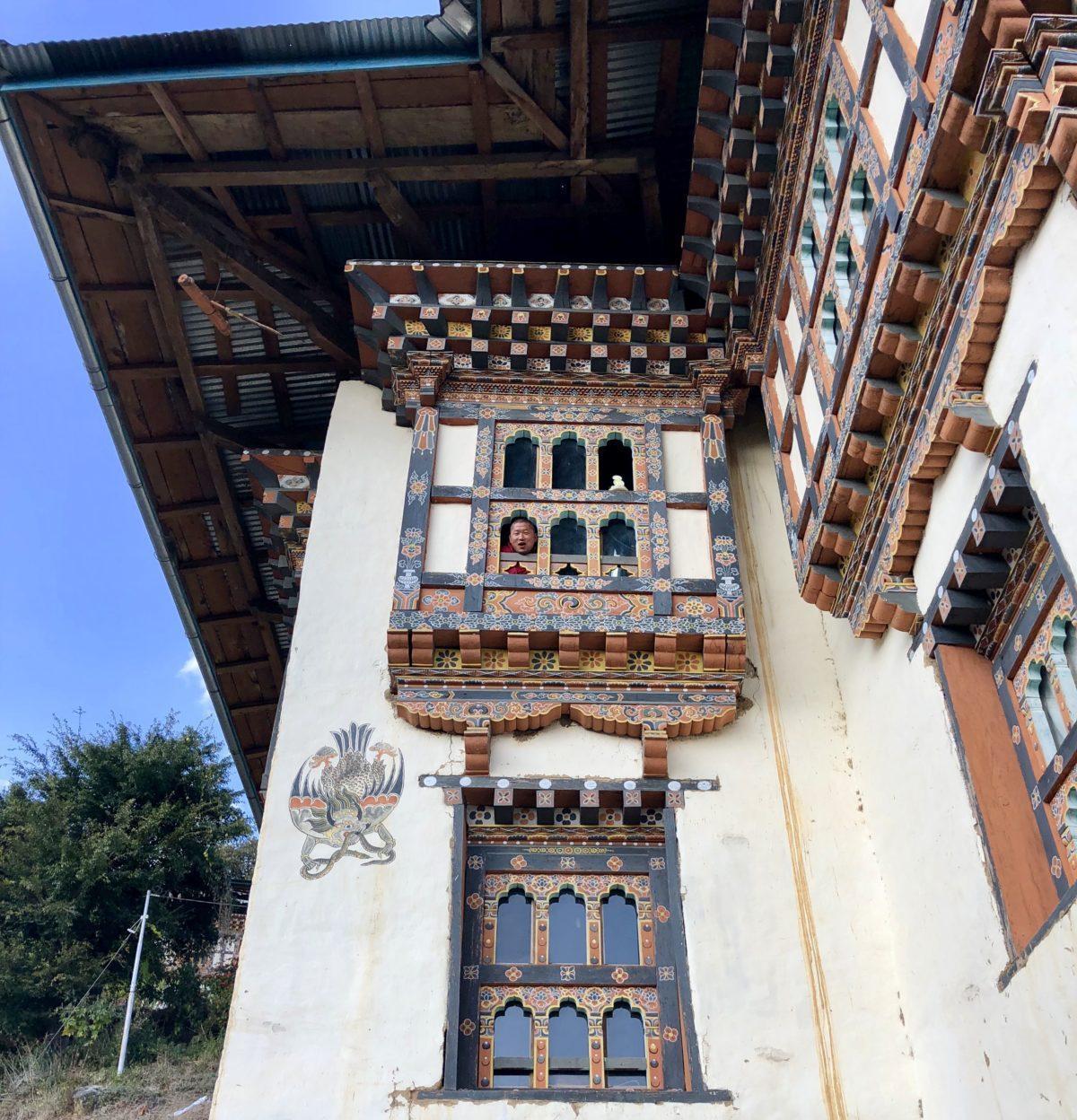
The head monk waved to me out the window of the farmhouse. He is amazing as a leader of the monks. He knows all the chants from memory and speaks perfect English.

During the ceremony, Lama’s brother Beyla was honored for his promotion as head of traffic police for the city of Paro, a job that he does with great passion and care. We all gave him flowers, money, and thanked him for his service.
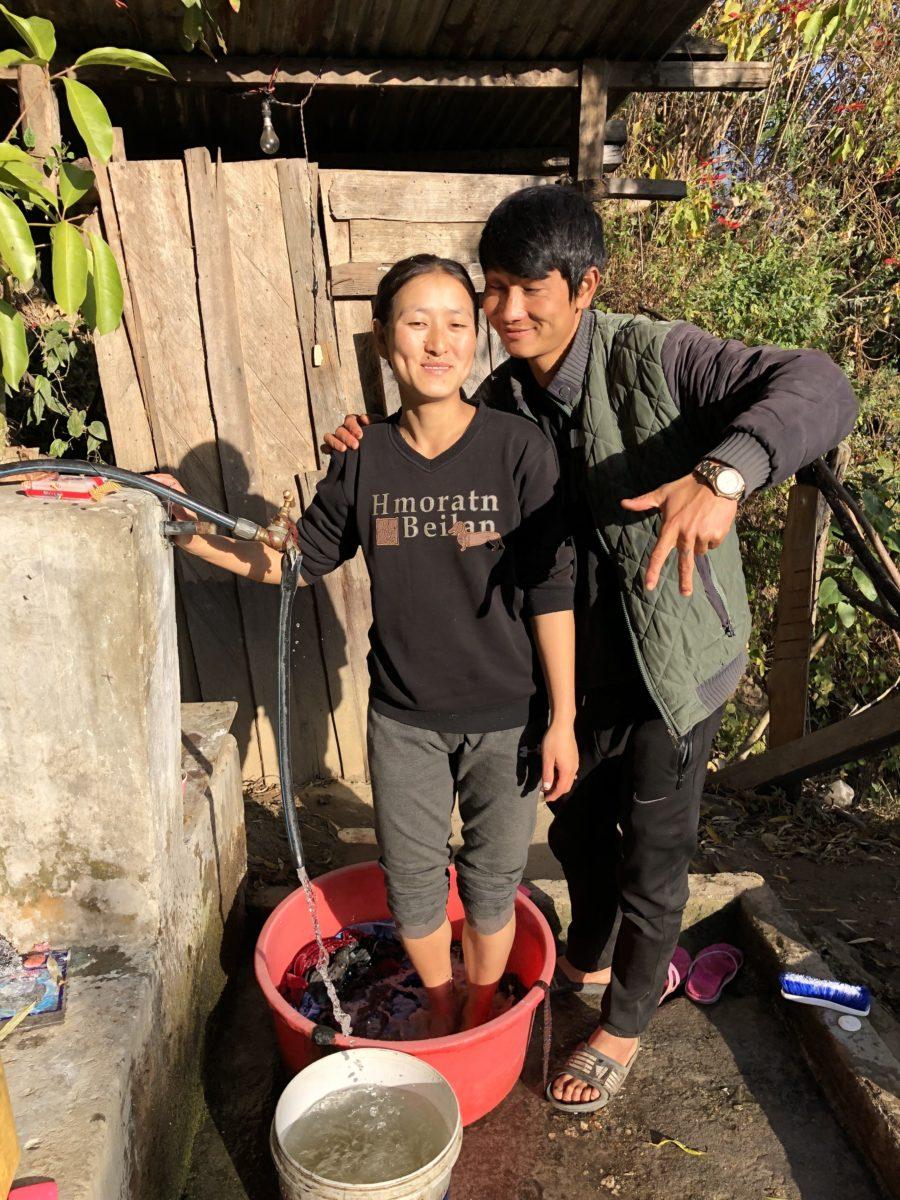
Laundry day at the farm. If you don’t have a washing machine, just use an old-fashioned agitator. These are my cousins Pubha Namgye and his wife Damchey.
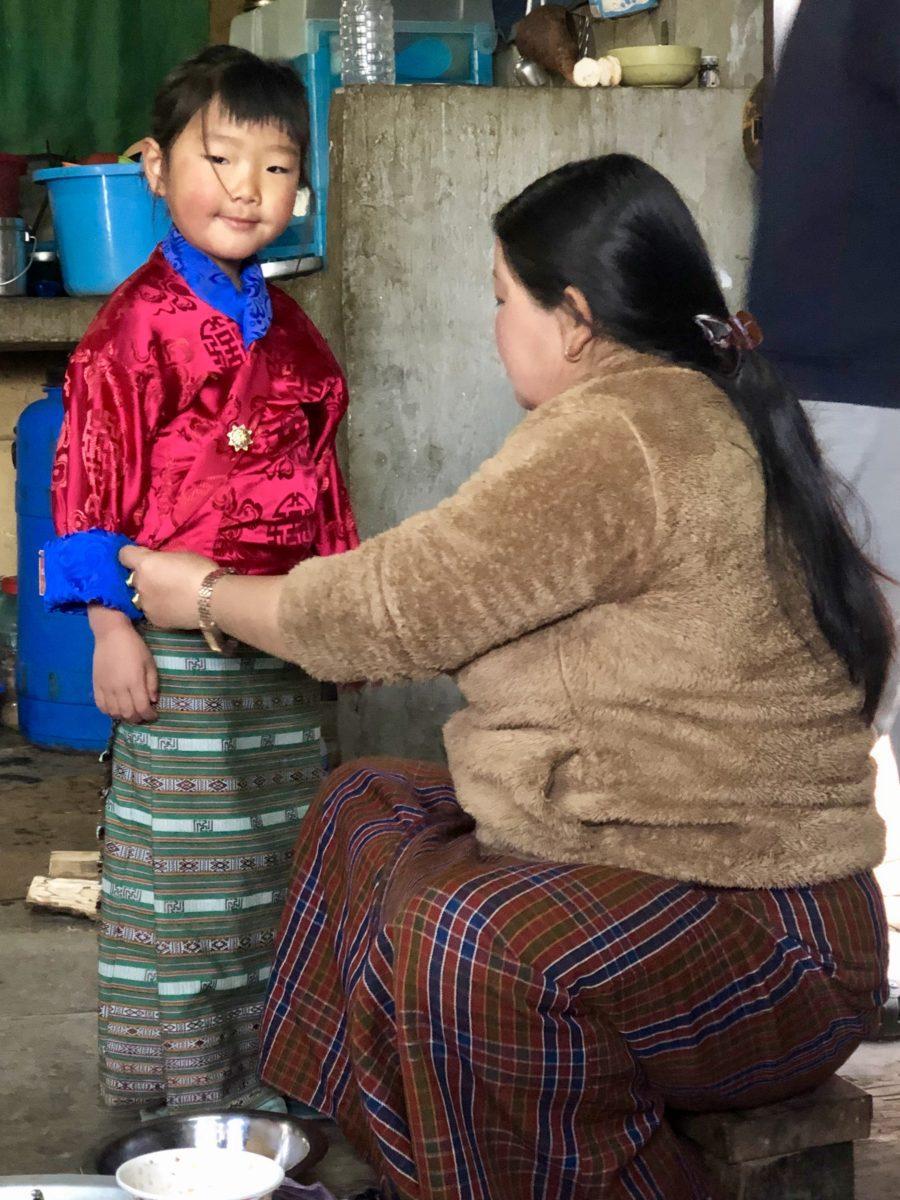
My niece Pari gets to wear her best kira for the ceremony.
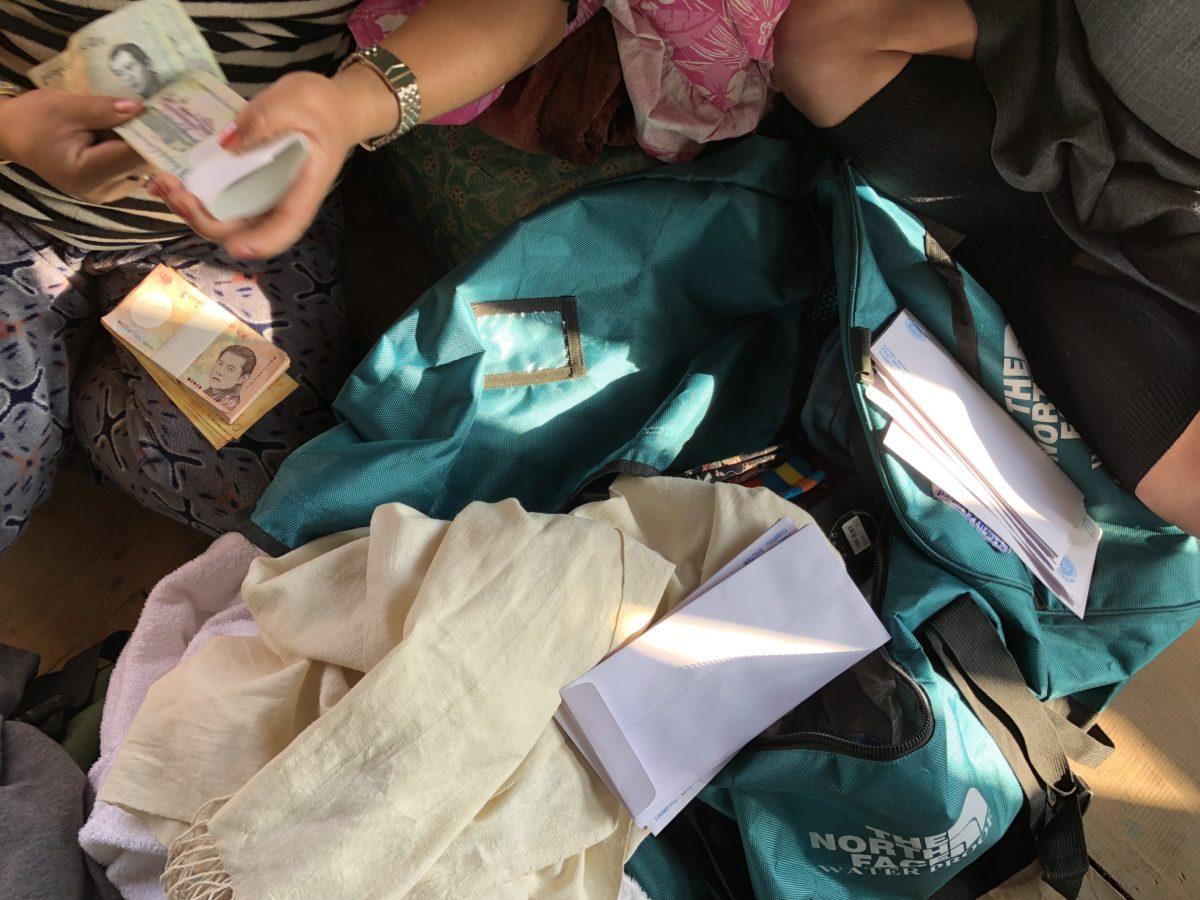
A pile of money gets divided into envelopes, one for each monk. It is distributed at the end of the celebrations.
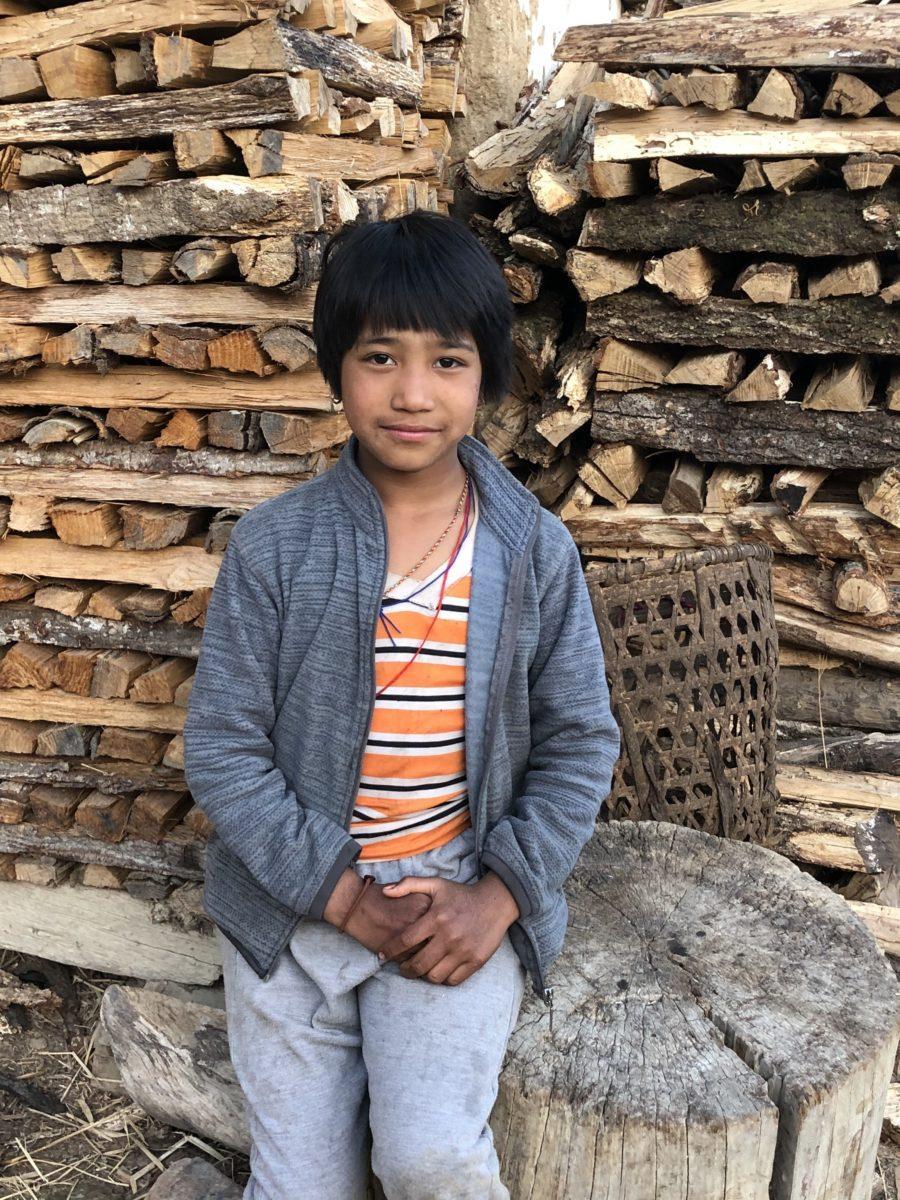
This is Hamu, an adopted Indian orphan who lives on the Lama’s farm in Punakha Bhutan. She is utterly sweet and kind and she loves to dance.
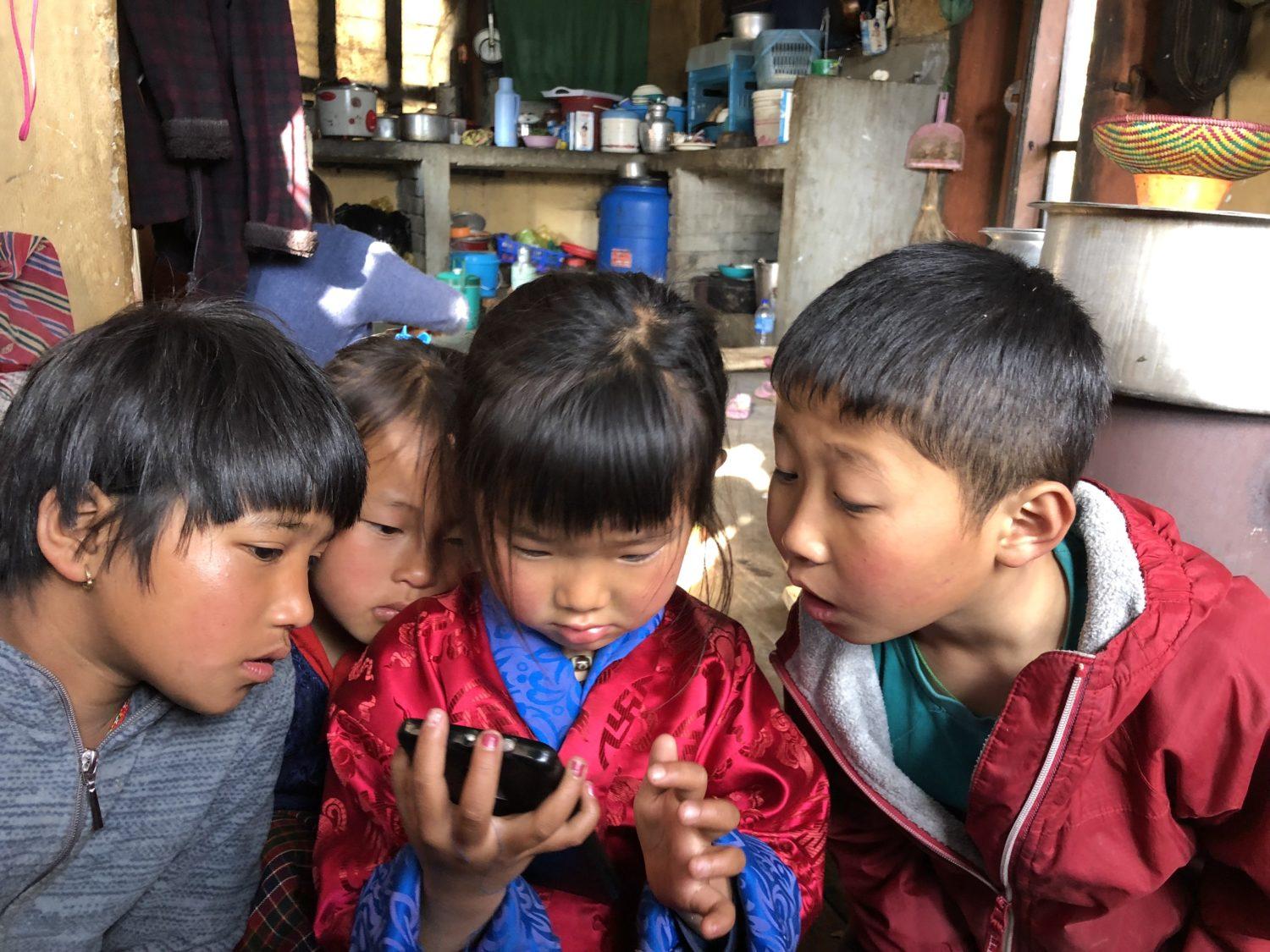
Children were fascinated by cell phone games, often glued to the screens for hours at a time.
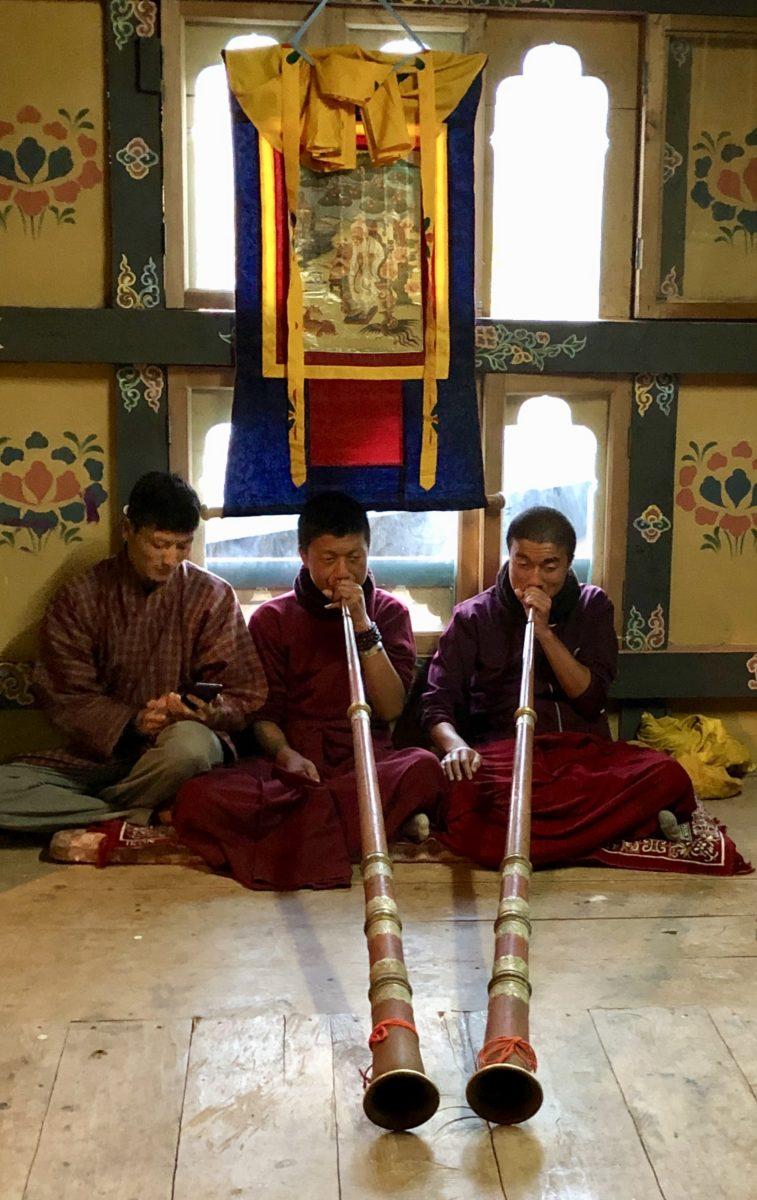
Monks play the long horn called “dung”. These three guys are my cousins.
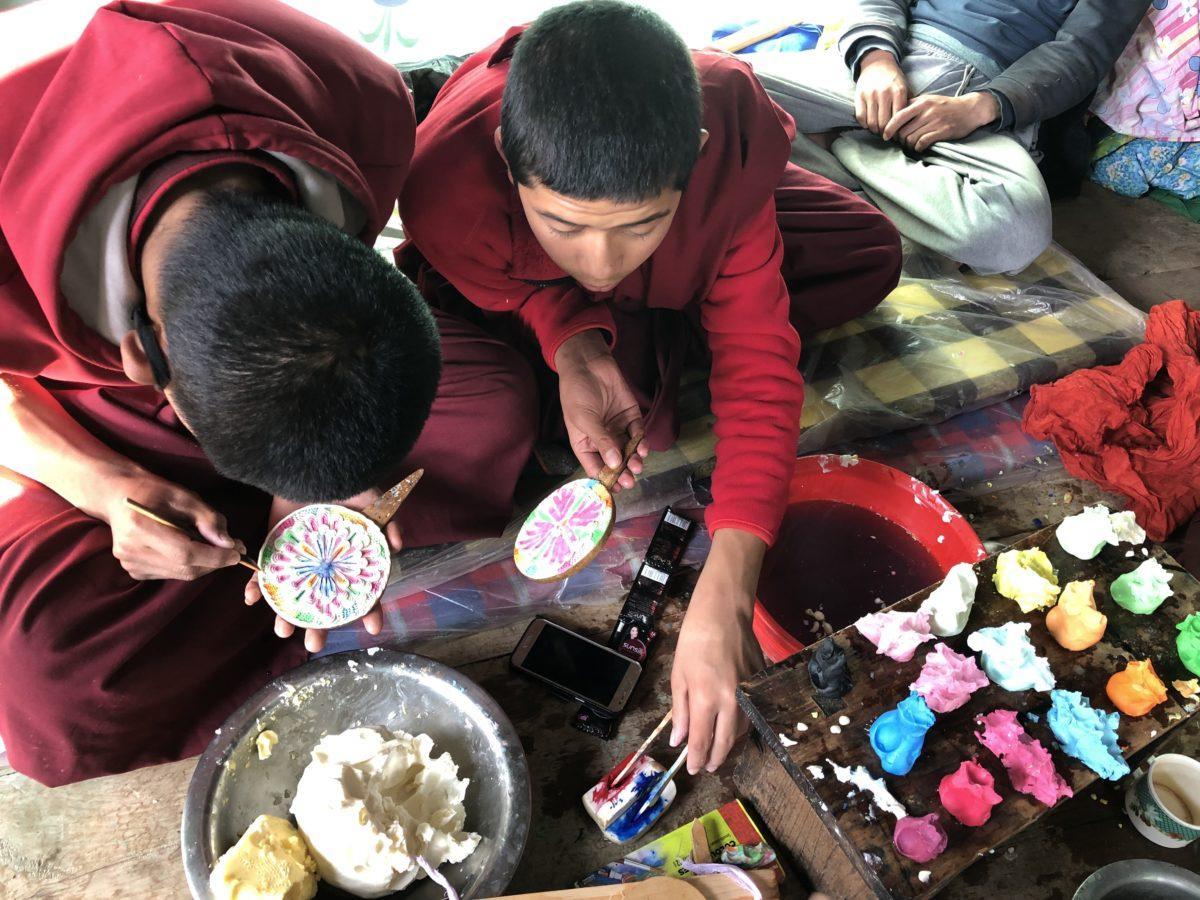
The lamas worked all day to prepare decorations for the altar.

The tormas are finally finished by about 3pm on day two. The monks are very proud of their work. Later on, these items will be boiled down into rice porridge and consumed. Nothing goes to waste.

All family members come into the shrine room in sequence of birth to do six prostrations. This is grandmother Rinchen Pida’, assisted by a helper.
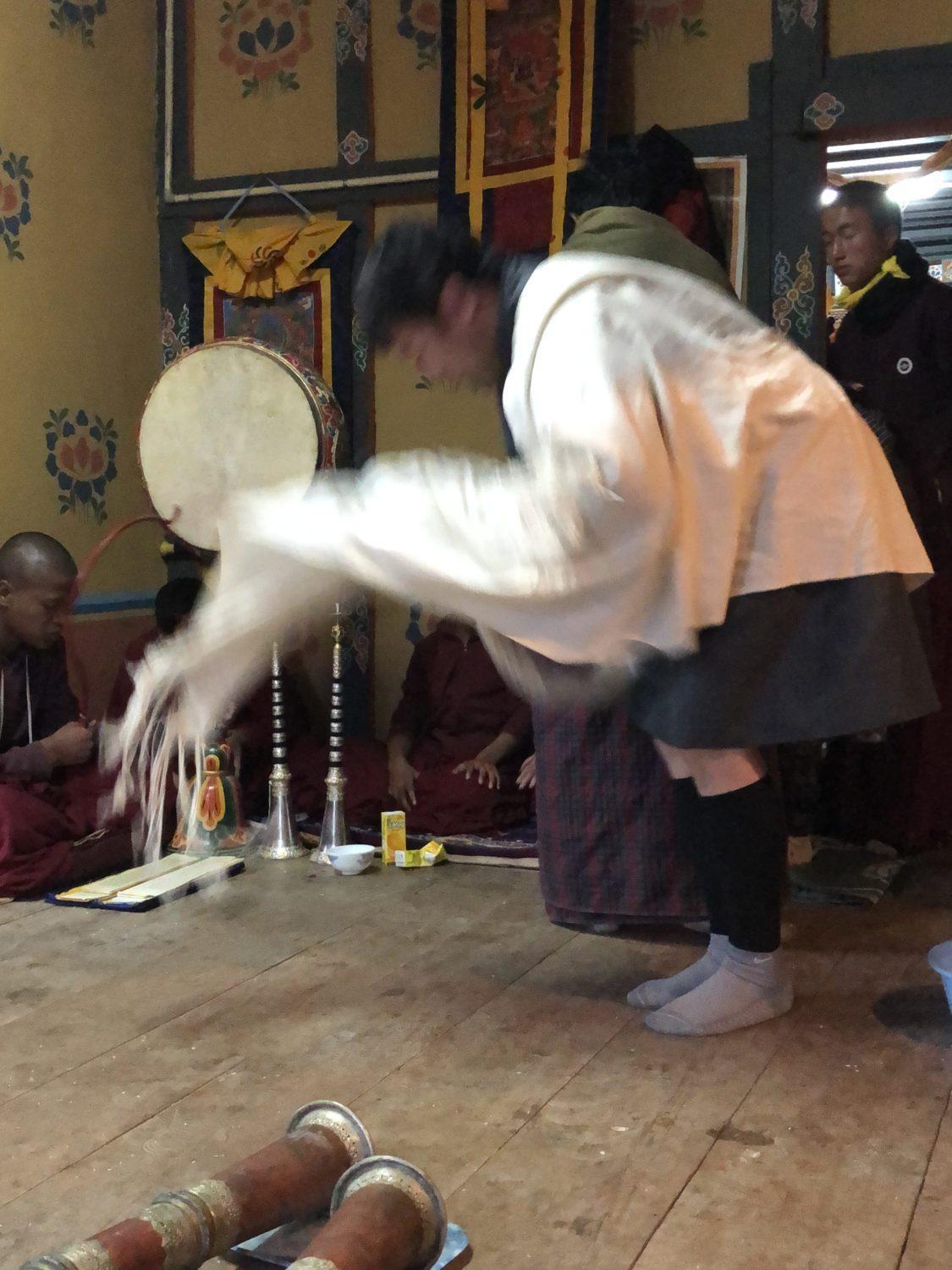
At the beginning of the ceremony, everybody does six prostrations according to tradition. This is the Lama taking his turn.
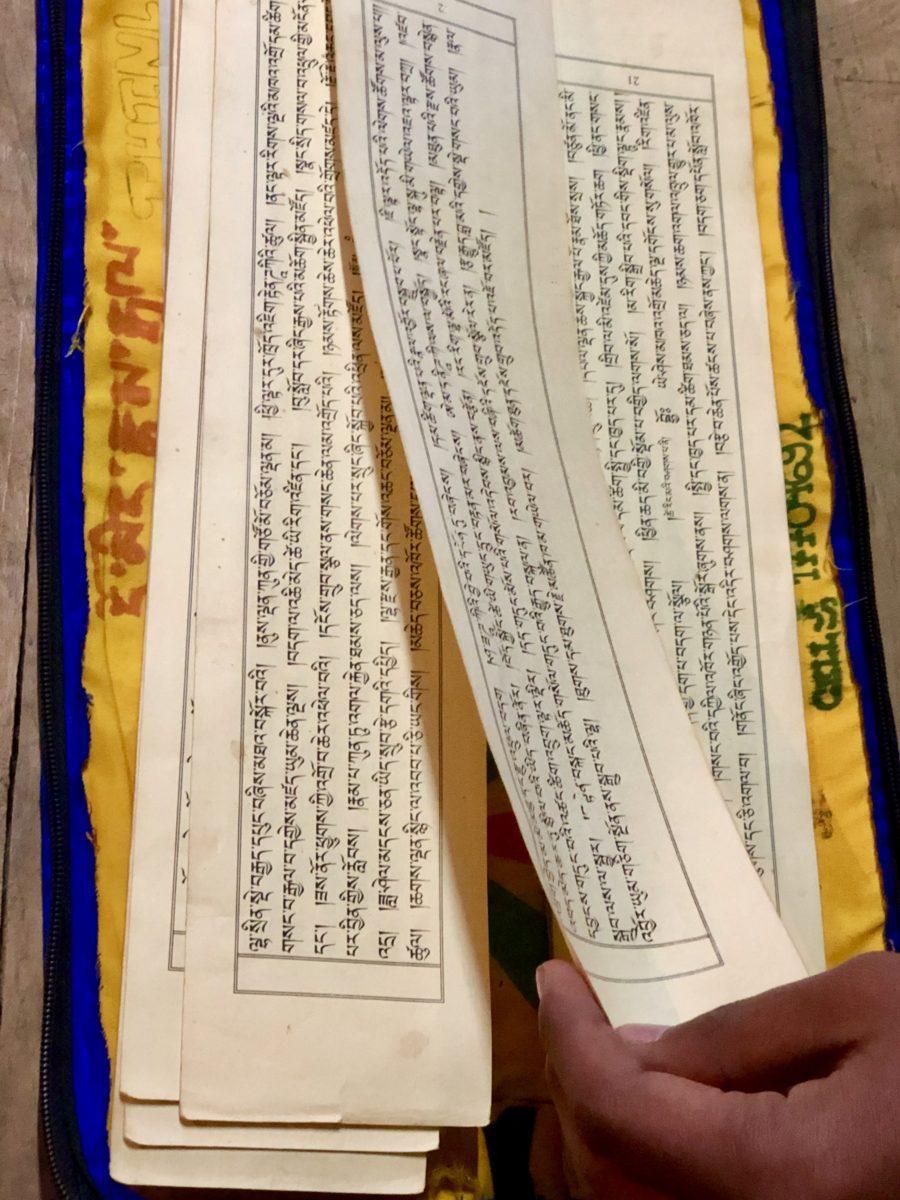
Some of the monks know the chants from memory. Some monks read these traditional pages in Dzongkha.
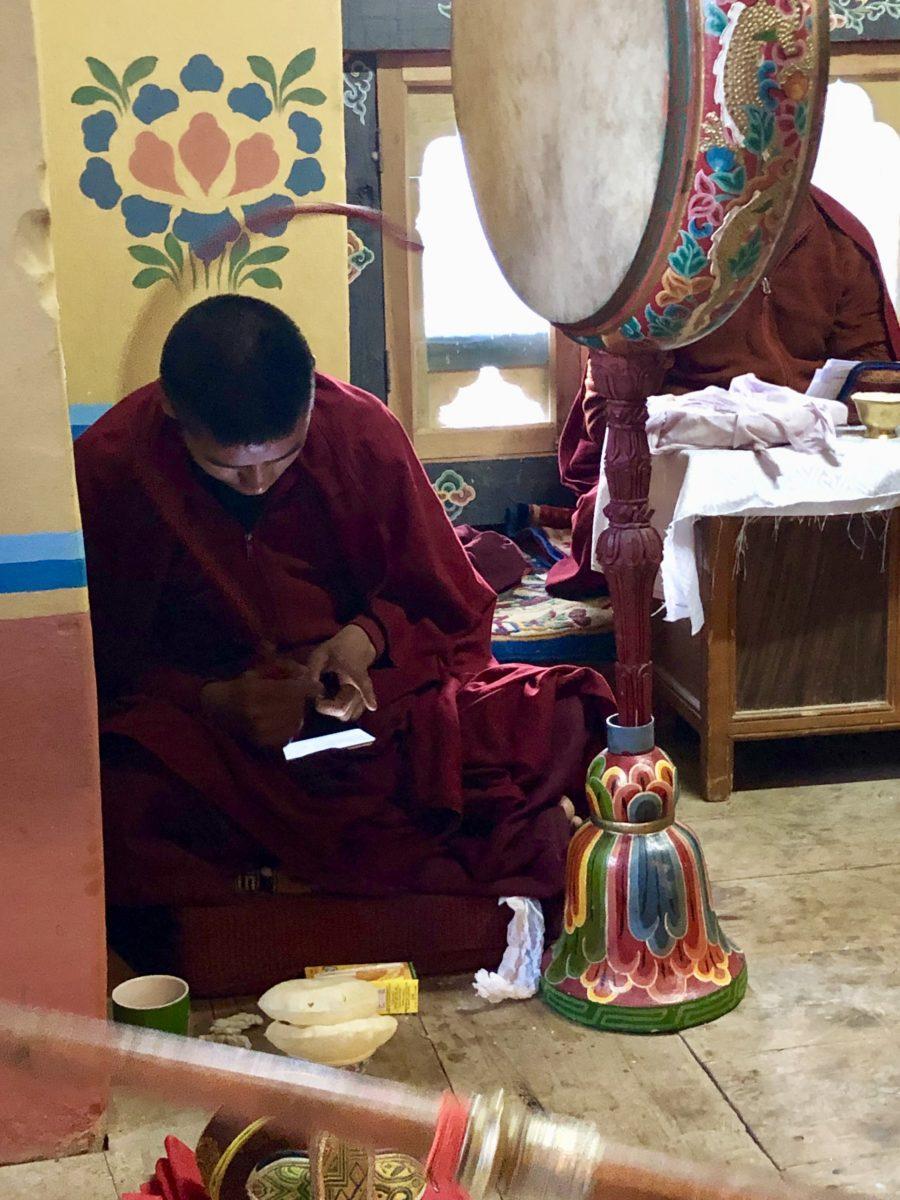
Some monks read the chants on their cell phones.
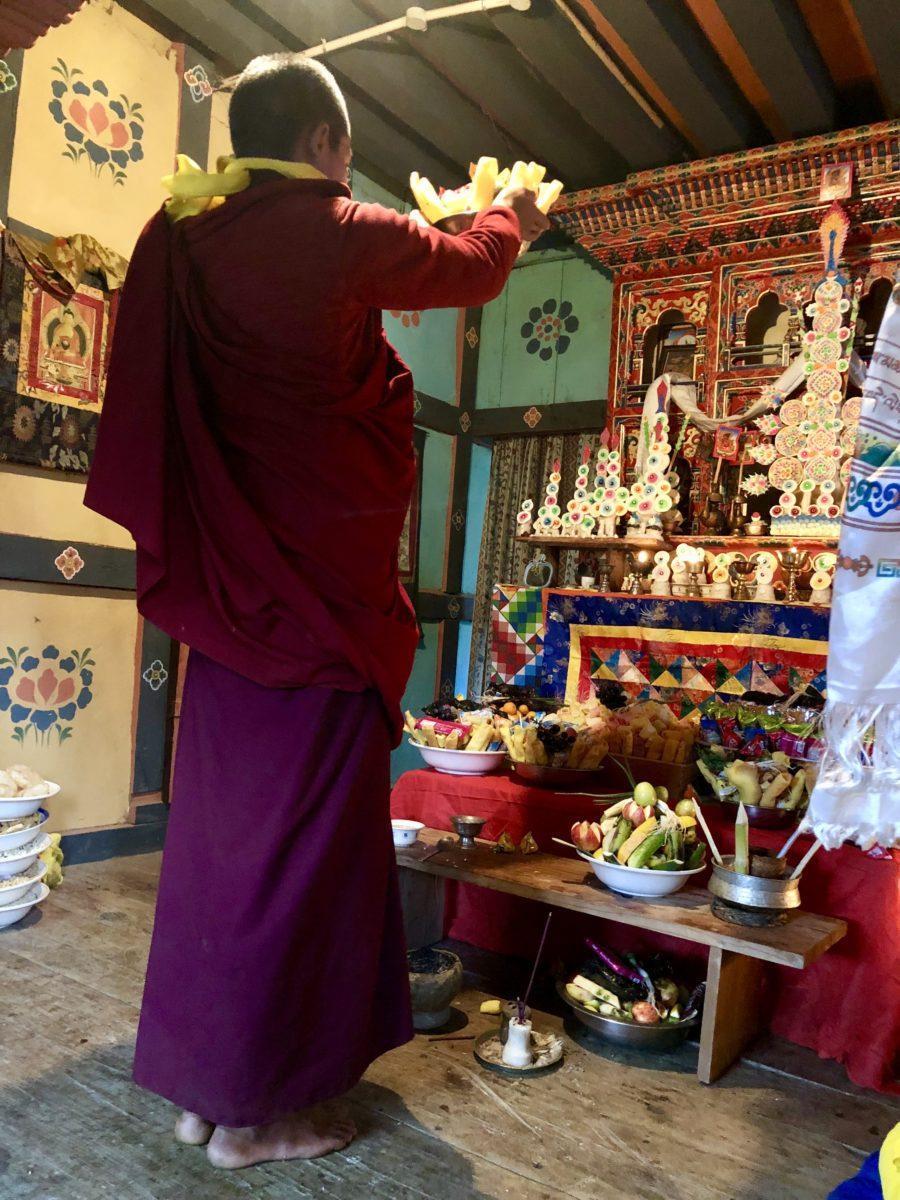
The ceremony has many steps. The feeling in the room is serious prayer, blessings, and fun. This monk was chewing bubble gum the whole time, but I wasn’t quick enough to catch him blowing a bubble.
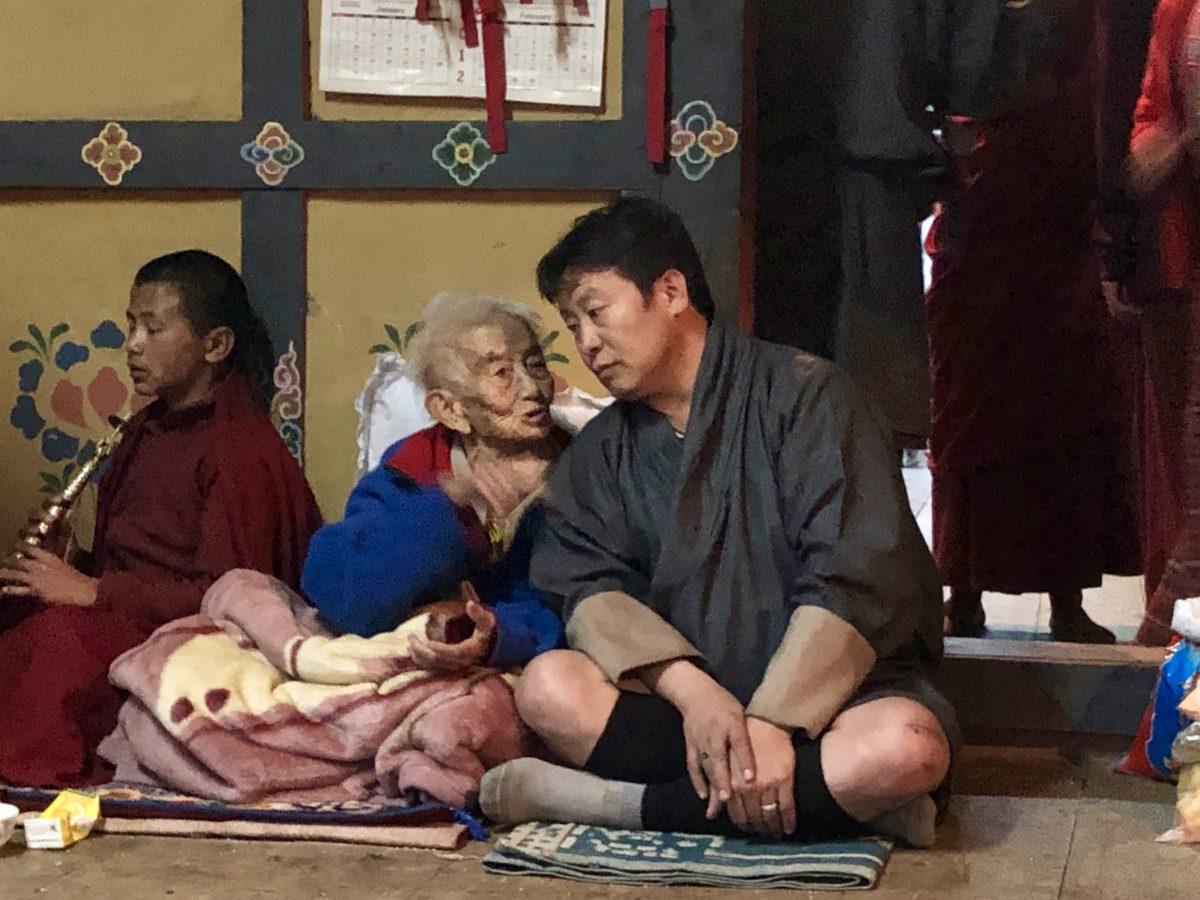
Lama listens to his grandmother Rinchen Pida’. She’s a very vital 98-year old.
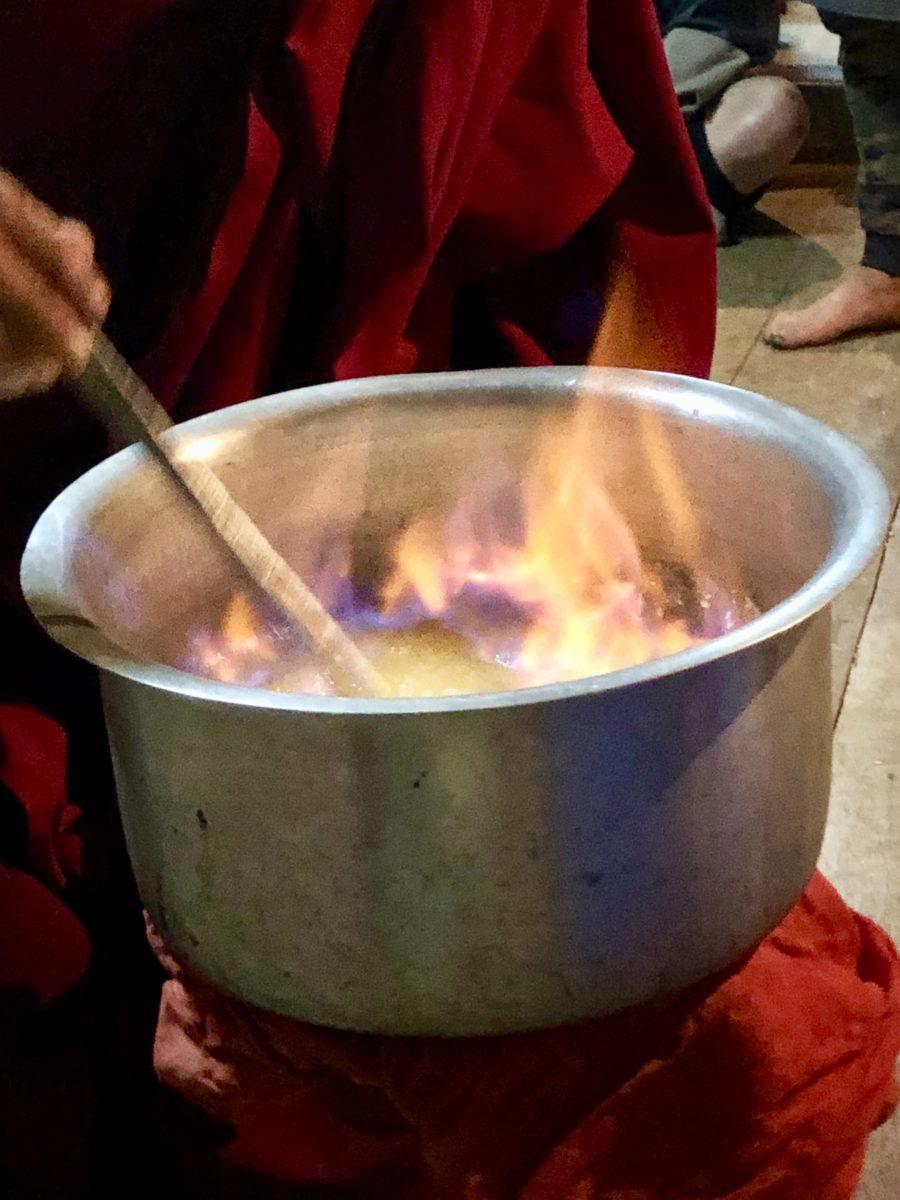
At the end of the ceremony, the monks served flaming rice liquor “Yangcha” to every guest. Yep, this is the strong stuff!
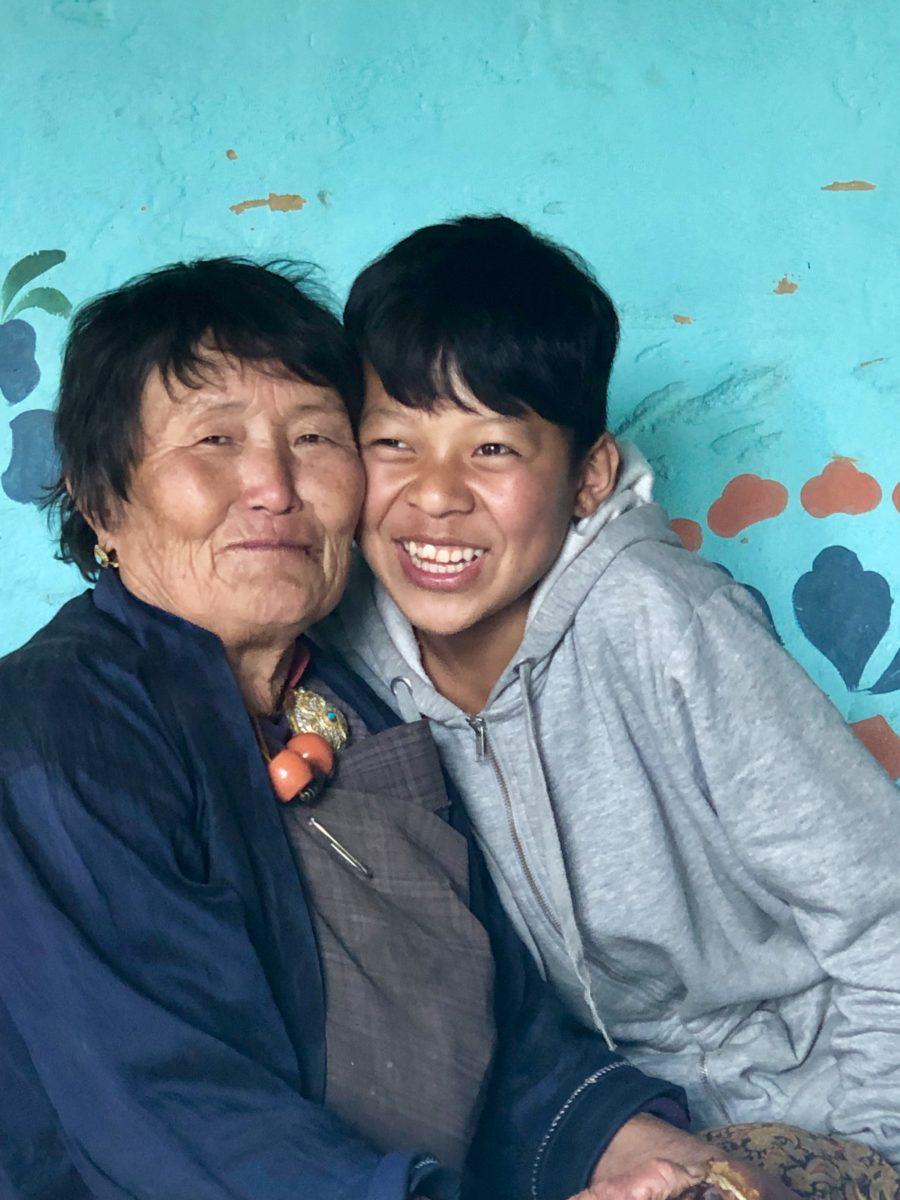
Kunga is Lama’s son from a previous marriage. He is a brilliant 15-year old and speaks perfect English. He loves his grandma Zekhom.
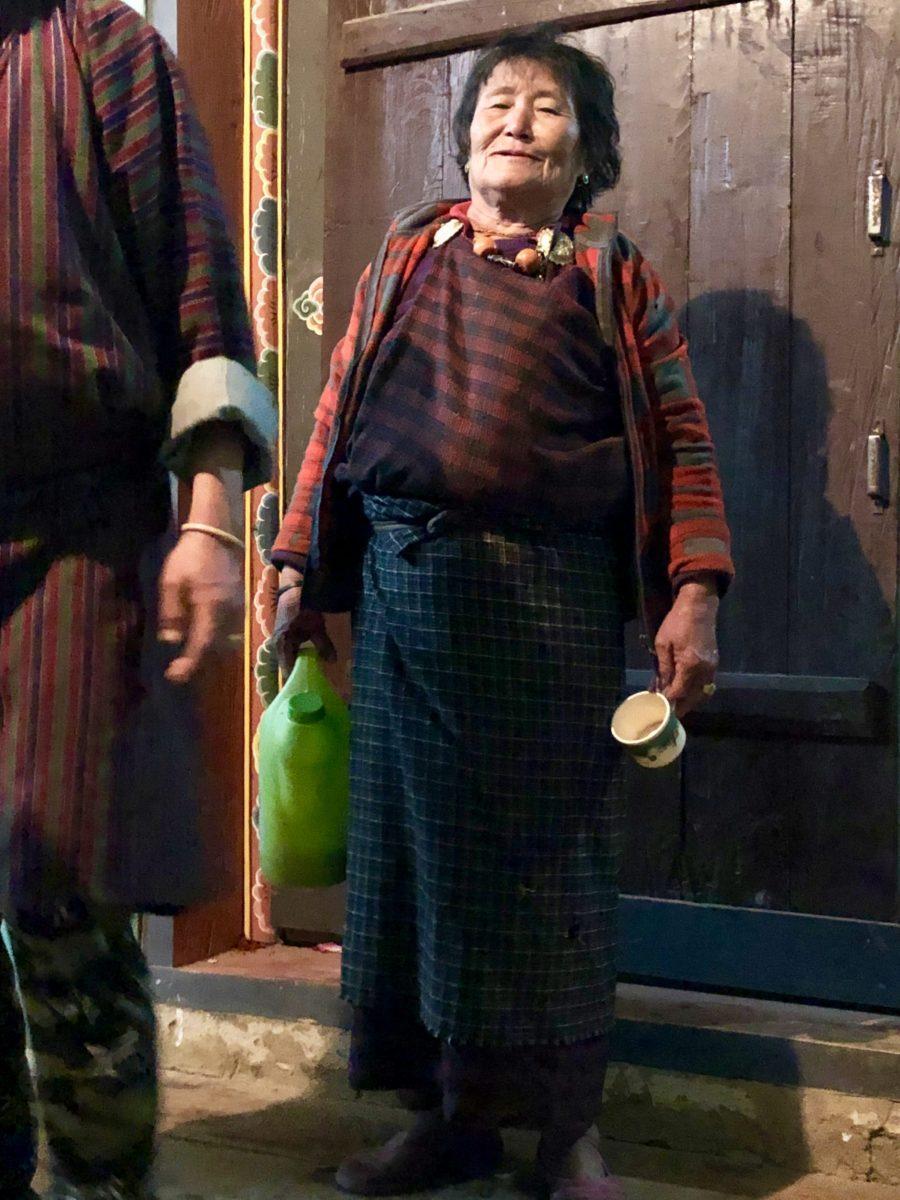
After the ceremony Zekhom served rice liquor “Yangcha”, and everybody got tipsy.
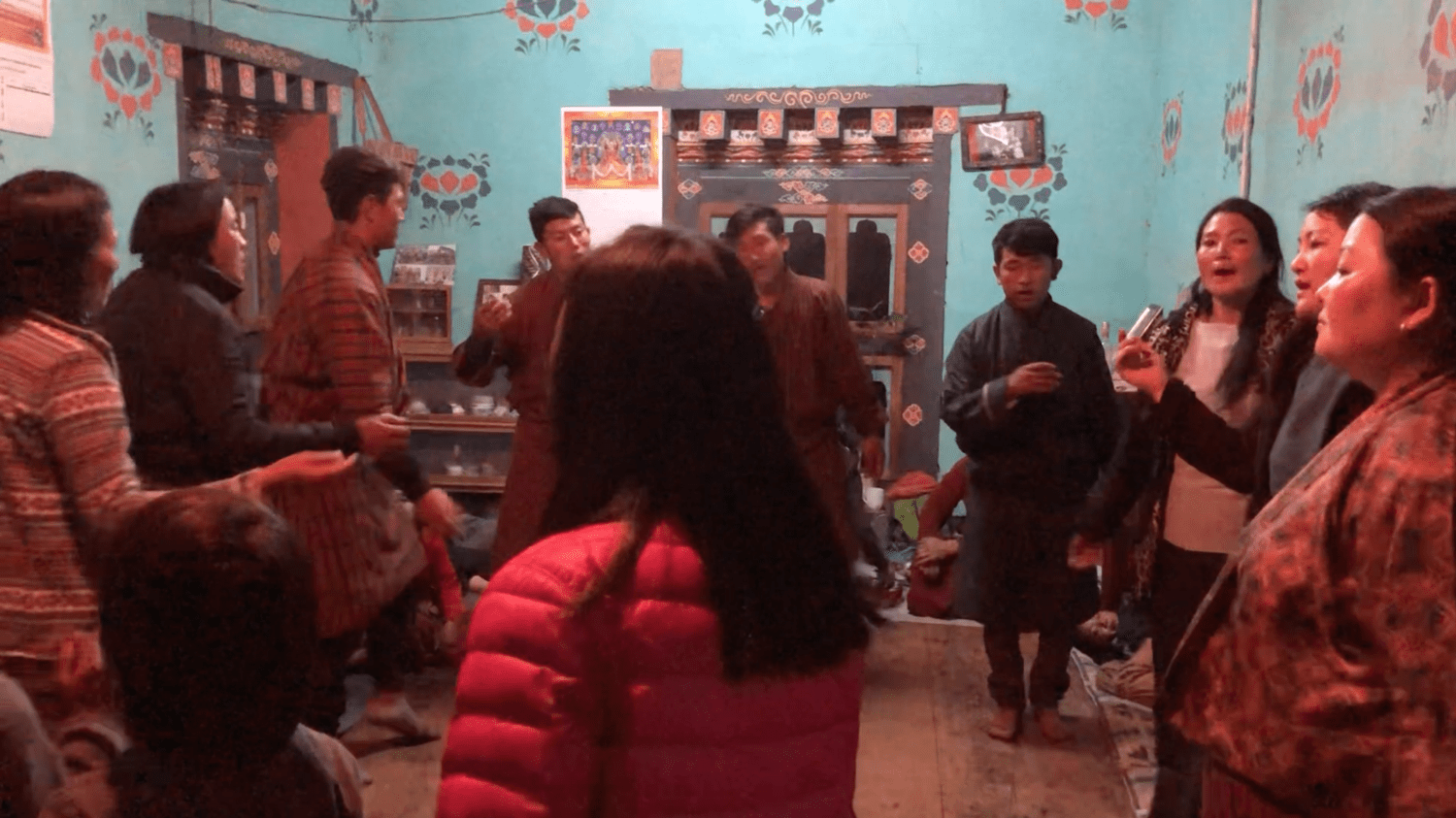
After the puja everybody sang and danced until the wee hours of the morning. They sang hundreds of traditional songs and danced until 2 am. I tried to follow along and discovered the dance sequences are quite complex.
Thanks for joining me! Next week I’ll be setting up our new home in Paro.


